- Our Philosophy
- Ajinomoto Group of Companies in Thailand
- Our Global Network
- Our Corporate Brand Logo
- Our Excellent Management
- Ajinomoto Group's Quality Assurance
- Our Stories
- Our ASV story
- Our Umami story
- AjiPanda story
- Victory Project
- Our PR news
- MSG Article
- Inspiring Story
- Behind Our Lines
- Eat Well Live Well
- Amino Acid Story
- Contributor
- Sustainability
- Our Product
- Retail Product
- Food Service
- Food Industrial Product
- Our Activities

On-site Factory Visit
- 360 Virtual Factory Tour
- Our Cooking Class
- Mae Baan Thi Rak Online
- Other Activities
- Campaign announcement
- Job Position
- Recruitment Process
- Welfare and Benefit
- Life at Ajinomoto
- Press Center
- Follow us on
Welcomes everyone to visit our 5 factories; Phra Pradaeng Factory, Pathum Thani Factory, Kamphaeng Phet Factory, Nong Khae Factory, and Ayutthaya Factory which are created as Ajinomoto Exhibition Center giving a chance for anyone who would like to visit and learn our production process, quality control system, safety and environment, and company products.
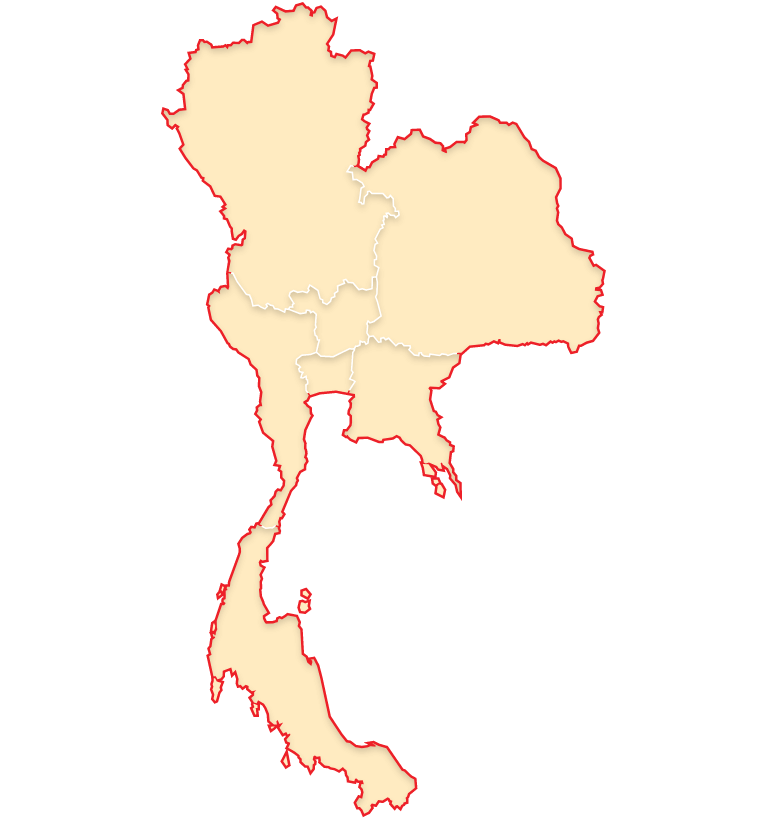
KAMPHAENG PHET FACTORY
The Kamphaeng Phet Factory comprises of 2 company’s production bases to produce “AJI-NO-MOTO®” product in 1997 and Ribonucleotides product, flavor enhancer, under the brand “AJITIDE® I+G” in 2003, which is widely used in industrial food manufacturing such as instant noodles, sauces, snacks, etc. Both of our products are produced from tapioca starch as main raw material. In addition, the factory has implemented “Biomass Boiler Technology” by using rice husks to produce stream energy instead of fuel oil. This helps reduce petroleum import and reduce carbon dioxide or Green House Effect emission, which is the cause of global warming. Besides, it helps create value added to the agricultural waste products and generate more incomes to local farmers. Moreover, the Ajinomoto exhibition center to provide umami information, MSG production and ASV story to the public is located here as well.

AYUTTHAYA FACTORY
The factory is located in Nakhon Luang District, Phra Nakhon Si Ayutthaya Province. It is the third MSG Factory of the company to produce “AJI-NO-MOTO®” product to support the market growth both domestic and overseas. The factory started its operation in April, 2013. This factory utilizes advanced production technologies from Japan which enables the use of agricultural material which is tapioca starch for “AJI-NO-MOTO®” production. Besides, for sustainable living with the community, the factory implements “Biomass Boiler Installation” which uses rice husk to produce stream energy replacing the petroleum usage. It is the 2nd factory of the company next to Kamphaeng Phet Factory that successfully developed this technology. In addition, the factory also set up the exhibition room to provide all-round information of umami and MSG such as production process and its safety matter to the public as well.

PATHUM THANI FACTORY
The Pathum Thani Factory was formerly established as the manufacturer of L-Lysine, an essential amino acid for protein supplement in animal feed. Currently, the company has changed this factory to be the new MSG production base to produce AJI-NO-MOTO® MSG product, an umami seasoning, which uses tapioca starch, the abundant agricultural material of Thailand, as the raw material., in order to meet consumer’s demand both domestic and foreign. The factory starts the production of AJI-NO-MOTO® MSG product since April, 2020.

NONG KHAE FACTORY
The Factory is located in Nong Khae Industrial Estate, Saraburi Province, with its first product manufacturing, “RosDee®”, flavor seasoning powder, to respond highly increasing demand from Thai consumers and consistent market growth. It is also an important company’s production base of other food products such as “RosDeeMenu®”, completed taste menu seasoning powder product, “RosDee cube”, “Cook do®”, menu seasoning product and etc. The Nong Khae Factory is one of the largest high quality food production bases of the company and in Asia by establishing the Thai Food Technology Center (T-FTC) to conduct research and development to deliver high quality and safe product to consumers.

PHRA PRADAENG FACTORY
The Phra Pradaeng Factory is the first MSG factory in Thailand and the first production base of Ajinomoto Co., (Thailand) Ltd. It started producing “AJI-NO-MOTO®” MSG product, the umami seasoning, since 1962 until May 2020. Currently the factory produces the instant coffee mixed powder “Birdy® 3 in 1”, low calorie sugar “Lite Sugar®”, and new product to meet consumer’s demand.

The Rules During Visiting Factory
Visiting Time

How to visit our factory
- Choose the factory you would like to visit
- Check available time-table (Date/Time)
- Fill in the factory visit request form and attach 2 document (1. Factory visit request letter 2 Visitors list) before the visiting date at least 2 weeks or contact by calling the factory for reserving another visiting date
- Waiting for the acceptance and confirmation from factory (1 week after receiving document)
- Visit factory on the scheduled date and time

Take The Chiang Mai Factory Tour Trip – These Thai Handicrafts Are Beautiful
When I travel to the northern city of Chiang Mai, Thailand, I always end up on the city’s famous factory tour. A half-day trip to several Chiang Mai handicraft factories, you see traditional handicrafts being made and get to spend a couple of hours shopping in the factory shops. One of the cheapest tourist tours in Chiang Mai it’s often known as a ‘Budget Tour’ (although not, if you buy a lot of stuff), but is it worth it? I have to say a resounding “Absolutely”, and here’s why.
The Cost of the Chiang Mai Factory Tour – With tour prices varying slightly, depending on which company you go with, costs on average 400 baht ($13.25), which for a three and a half hour tour with a guide, I think is an astounding deal. Sure, you’ll likely spend money in one or more of the factory shops, but prices are good and most of them don’t have pushy staff, so you aren’t forced to buy something if you don’t want to.
Time of Factory Tour – There’s a choice of a morning or afternoon tour, with most companies picking you up at your hotel between 8-8:30 am and dropping you off at 12pm for the morning tour and 1:30pm to 5pm for the afternoon tour. You’ll see at least four handicraft factories and, you’ll also be able to get drinks and snacks at almost all of them if needed.
Which Factories Are Included? – With many different handicraft factories to choose from, most of the tours seem to visit three main ones plus one additional. The three main ones are the Umbrella Factory, a Silk Factory (there are several they choose from), and the Teak Factory. Additional ones include the Lacquerware Factory, Silverware Factory and Jewelry Factory.
On the six different times I’ve taken the tour, I’ve seen variations of all six on one tour or another.
What Will You See? – At the Silk Factory, you see the silk worms and find out how silk is processed. You also watch silk thread being woven into silk fabrics sometimes by weavers who are handicapped, which is fascinating to watch and the work they create is stunning.
On the Teak Factory tour, how teak wood is grown and processed is explained followed by an demonstration by teak wood carvers. The carving is unbelievable, you’ve never seen anything like it, and the intricacies of the work will leave you stunned for hours afterward.
The Umbrella Factory has a demonstration of handmade mulberry paper being made from start to finish. Then you can take something paintable (fabric bags, camera cases, t shirts, shorts, jackets, paper umbrellas etc) to one of the artists who will hand paint a design of your choice onto it. The hand painting process takes between 5-15 minutes per item and costs around $2.
The Lacquerware, Silverware and Jewelry factories each give you a short demonstration of each craft, then let you loose in their factory shop.
Buying Products – Prices in the factory shops are reasonable, particularly for the quality of work. The Silk Factory is the most overpriced so, unless I see something stunning I’ve never seen before, I save my silk purchases for one of Chiang Mai’s night markets.
The Teak Factory sells everything from small hand carved teak toys and ornaments, to enormous wall hangings, mini bars, beds, tables, chairs and more. Any large product you buy can be shipped direct from the factory to your home in most countries of the world. They’ll just add the shipping charge to your purchase.
The Umbrella Factory is cheap and sells hand made paper umbrellas, kites, photo frames and albums, greeting cards, fans and paper lanterns. Items start as low as 50 cents and are rarely higher than a few dollars. The highlight of this factory is seeing the hand painting by the outdoor artists – lovely work and so cheap.
At the Lacquerware Factory pick up a lacquered box, tray, coaster set or vase. The Silver Factory has beautiful necklaces, bracelets, rings, beer tankards, vases, business card holders etc, all made of top quality silver, and the Jewelry Factory sells gold and silver jewelry inlaid with gems of all varieties.
For the amount of time you spend on the tour, the guide who’s knowledgeable and interesting and the opportunity to drive around and see a little of Chiang Mai’s suburbs, the factory tour is worth it. When you throw in seeing the most beautiful handicrafts in the world and fair prices on unique merchandise you won’t see anywhere else, the Chiang Mai factory tour gets a two thumbs up from me. Why do you think I’ve done it six times?

THE FACTORY
a sustainable jewelry manufacturer
Our fully-owned best-in-class production facility is situated in the suburb of Bangkok (Thailand), covering 9,300 square meters with approximately 400 skilled craftsmen in-house (all full-time). We have passed numerous numbers of quality audits and inspections exclusively conducted by reputable companies. Our factory is currently certified by Macy, Disney, Kohl's, Social Compliance Services Asia (SCSA), and the globally recognized Business Social Compliance Initiative (BSCI).
Clients are welcome to come in and discuss their project or build a collection with one of our dedicated teams. Learn how to make your jewelry sustainable, and cost-effective, or be inspired by the endless possibilities from our open-line. Factory visits are by appointment only. Hotel and airport pick-up services are also available upon request. The closest airports to fly into are Suvarnabhumi (BKK) and Don Muang (DMK), which are both approximately 1-hour drive to the factory. It will also take 1 hour from Bangkok's city center. The closest BTS Skytrain station is Bang Wa.
For directions and to schedule a visit, please visit the 'Contact Us' section.
THE ART OF JEWELRY MAKING
All jewelry created by evershiny is masterfully crafted by our native artisans in thailand. we are proud to be supporting the local craft and working alongside our terms of specialist jewelers within our community. using the traditional method of lost wax casting only, every individual piece is hand-finished by real humans (never machines) to the highest quality standard using specialized skills that have been handed down through generations. from hand-carving, the designs in wax form, perfecting our castings, soldering/assembling individual elements together, polishing, hand-setting stones, plating (using only electroplating process), to finally, quality checking. every stone is carefully selected as well for its brilliance and color; then cut, faceted, polished, and set painstakingly by hand. our work requires exceptional precision, talent, and attention to detail. our jewelry is ‘touched by a thousand thumbs’ before it makes its way to you. that is the standard of hand-craftsmanship and quality behind every evershiny-made piece. all materials that we use are carefully handpicked, meticulously quality controlled, and ethically sourced as well., our technical equipment/machinery includes the following: cnc engraving machine cnc machine, drilling machine die casting machine spin casting machine grinder, laser engraving machine, in addition, orders are now managed by our computerized erp (enterprise resource planning) management software to enhance efficiency and provide real-time production data and statistics. we are also constantly integrating new products, as well as actively investing in r&d and new technologies. at evershiny, we are proud of being extremely open-minded and are always open to new suggestions and ideas in order to continuously improve the way we operate. we believe our path is crossed by input coming in from all parts of the world, from europe to australia, which really enables us to know exactly what is trending and in demand..

We like to think that our factory is a place made of technology, innovation, and experimentation. It is an adventure in itself working inside a factory. However, beyond the machines, it is people who make the difference. People are at the heart of what we do, and are the most important part of our business, from our jewelry designers to our talented craftsmen and craftswomen. Furthermore, having the production done locally is vital to us as it supports our very own community by providing career opportunities and aids in stimulating our local economy.
Evershiny has been audited by independent companies to ensure all workers are being treated fairly. we pay fair living wages, maintain a safe working environment, and no child labour is involved in any process of making our jewelry. in addition, w e run a very transparent workplace, where all members within the organization are encouraged to speak out, ask questions and learn about all aspects of the company., our artisans work 8 hours a day with a 1-hour lunch break, 6 days a week. they receive 6 days paid annual leave, with 13 days paid public holidays, x1.5 overtime pay, end-of-year bonus, and social security benefits. free training programs and upskilling are also provided to help them truly master their craft. at evershiny, we believe that a piece of jewelry holds the spirit of the individual who made it, so we go out of our way to ensure that all our workers are taken care of., did you also know that it takes 6 months to fully train a silversmith.

THE HANDMADE PROCESS
Siamaya Chocolate Workshop & Factory Tour

- One free chocolate drink per person
- Siamaya Chocolate Factory & Flagship Store, 12/8 Wua Lai Rd Soi 3, Tambon Hai Ya, Amphoe Mueang Chiang Mai, Chang Wat Chiang Mai 50100, Thailand Find us inside the Weave Artisan Society, which is here on Google: https://goo.gl/maps/RRrmQAYD9mDJ51KW9 There is free parking outside, and our store and factory is in the back of the building - follow the signs.
- Not wheelchair accessible
- Near public transportation
- Infants must sit on laps
- Confirmation will be received at time of booking
- This tour/activity will have a maximum of 12 travelers
- For a full refund, cancel at least 24 hours in advance of the start date of the experience.
Similar experiences

- JDZatSF 0 contributions 5.0 of 5 bubbles Great chocolate Siamaya is in an industrial building with other interesting artistic things going, in addition to their chocolate factory in the back. Their chocolate is high quality, delicious, and there are done vegan varieties available. I had the toasted coconut melted into a hot chocolate today. Highly recommended. Read more Written August 6, 2023
- Smile2935 0 contributions 4.0 of 5 bubbles A great chocolate shop in Chiang Mai I enjoyed visiting this chocolate shop. Tasting its good chocolate, and the packaging of chocolate bars too. A must do in Chiang Mai if you want to Discover local made chocolate Read more Written December 4, 2022
- NBlacks 0 contributions 5.0 of 5 bubbles Chocolate with Thai flavors 😋 - unique Chiang Mai experience! Excellent high quality chocolate with local Thai flavors of many different kinds - you really need to try this if visiting Chiang Mai! - visit the store to get the full “factory” experience and make sure to try the samples 😋! Can be a little hard to find as it is located in the back of a cafè there are signs but you need to look for them - ask for directions Read more Written November 16, 2022
- charlyrsmith 0 contributions 5.0 of 5 bubbles Experience the making/drinking & eating of REAL chocolate. Factory tour shop and cafe. Newly opened what a great experience you get to see the factory and there is a wonderful cafe serving chocolate fondue and chocolate drink made with their quality chocolate. Would highly recommend. Read more Written September 24, 2022
- Rainbow T 0 contributions 5.0 of 5 bubbles Gourmet chocolaterie in Chiang Mai As an official sweet tooth possessor and chocolate aficionado I've got to say that Siamaya is amazing. Durian chocolate blew my mind, ice chocolate drink reassembled and refreshed it. Read more Written July 13, 2020
- 147elisabethw 0 contributions 5.0 of 5 bubbles Making your own chocolate bars!! Had a great time at Siamaya Chocolate learning about the process of the making of the chocolate and creating some of our own bars to take home. Great activity to do with friends!! Read more Written June 27, 2020
- MisterMinister 0 contributions 5.0 of 5 bubbles Fantastic Chocolate We visited the shop and had a nice interesting chat with one of the owners. We were given several award winning chocolate samples. It tasted amazing and that is coming from a biased Swiss guy. Love the place, would return in a heartbeat and leave with a bag full of chocolate. Read more Written November 25, 2019
- junglechef1 0 contributions 5.0 of 5 bubbles Gourmet Chocolate and Good Times Went to their Chocolate Truffle event which was interesting and delicious. Previously taken my teenage and young kids and guests to tour the factory incl tasting of their varied flavors. Always welcomed with open arms and warm hospitality. Read more Written August 10, 2019
More to explore in Chiang Mai

Most Recent: Reviews ordered by most recent publish date in descending order.
Detailed Reviews: Reviews ordered by recency and descriptiveness of user-identified themes such as wait time, length of visit, general tips, and location information.
Buy it with

Siamaya Chocolate Workshop & Factory Tour provided by Siamaya Chocolate
Sabai Tour Chiang Mai Thailand
- Elephant Jungle Sanctuary
- Elephant Nature Park
- Half day elephant care no riding
- Mae Rim Elephant Sanctuary Half Day Morning Tour
- Mae Rim Elephant Sanctuary Half Day Afternoon Tour
- One Day Elephant Trekking Care no Riding
- One Day Elephant Care no Riding
- Golden Triangle
- One Day Black Temple and White Temple
- ATV & Whitewater Rafting
- Mountain Biking 'Eagles'
- Mountain Biking 'Highlanders'
- Mountain Climbing, Sankampang
- White Water Rafting, Chiang Mai
- White Water Rafting, Mae Tang
- Cooking Classes
- 1 Day Long Neck
- Doi Inthanon National Park
- Doi Inthanon Nature Trail
- Doi Suthep Temple
- Home Industries
- Khantoke Dinner
- Mae Ping River Cruise
- Night Safari
- Orchid & Butterfly Farm
- Tiger Kingdom
- Flight of the Gibbon
- Jungle Flight
- Skyline Adventure
- Bus Package Chiang Mai to Vang Vieng
- Minivan to Pai
- Motorcycle Hire
- Slow Boat Package to Laos
- Skip to content
Home Industries, Chiang Mai - Tour No.02
Our tour takes you around the factories of Chiang Mai where you can buy Silk and Cotton, of a high quality at attractive prices.
You can also purchase Woodcarvings, Lacquer Ware, Umbrellas and paper, Silver, Jewellery and Celadon (greenware).
What to bring?
Plenty of Thai Baht.
Tours leave daily from Chiang Mai at your own leisure.
Cost from 400 baht per person

Ajinomoto introduces its 360 Virtual Factory Tour highlighting modern technology and excellent management system
PUBLISHED : 29 Mar 2022 at 10:27

Recently, Ajinomoto Co., (Thailand) Ltd. introduces its new virtual factory tour online platform which allows visitors nationwide to be able to easily access the Factory Tour program in 360° view through online and smart devices. The new online factory visit platform offers the visitor an edutainment activity with “easy, fun and enjoyable learning everywhere, every time”. This reflects our company’s image as leading food company with in-depth understanding of consumer’s needs while emphasizing the Ajinomoto Group objective that aims to become a “solution-providing group of companies for food and health issues” along with creating leaning society and good thing to Thai society in accordance with our core business operation that “The Ajinomoto Group Creating Shared Value (ASV)".

As to prevent the pandemic of COVID-19 and to in line with the changing behavior of consumer in new normal life, the company therefore introduces new innovative factory tour platform to facilitate and provide opportunity to those interested people all over the country to learn our useful information of production technology, environmental management under green factory through easily online access.
Ajinomoto 360 Virtual Factory Tour is ready to welcome everyone to join via https://onlineajinomotofactorytour.com/ or scan QR code in the poster. In addition, if the COVID-19 situation is getting better, you can actually visit the real factory through https://www.ajinomoto.co.th/th/our-activity/general-factory-visit .

RECOMMENDED
Tiny scorpion species found, army probing drunk conscript's beating in barracks, excessive cadmium levels found in foundry workers, five meth-pill policy gets thumbs down: poll, repair work on red line escalators, lifts underway.
High Tech in Thailand: Touring Sony’s massive camera and lens production factory
by Dave Etchells
posted Monday, April 10, 2017 at 1:15 PM EDT
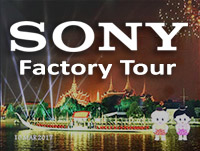
In early March of this year (that's 2017, for those of you reading this in the future), I and a small group of other members of the photo press had the opportunity to tour Sony's massive camera and lens production facility in Chonburi, Thailand. It's an impressive place. The photos and color commentary below tell some of the story of how Sony turns out so many cameras and lenses every day, and yet still manages to keep a tight grip on quality control to ensure each product off the line meets its standards. Without any further ado, here's my tour "diary".
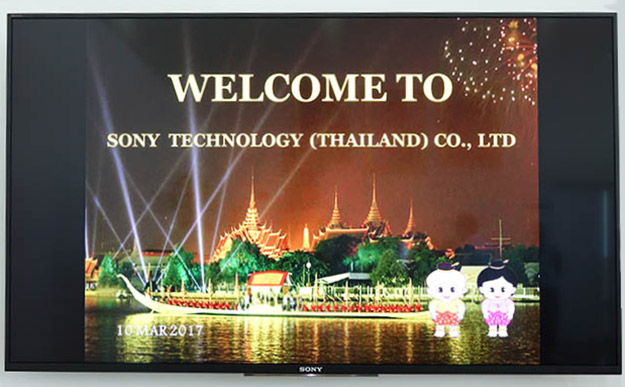
As always, we received a warm welcome at the entrance, this time displayed on a TV. (Sony, of course.) The official name for the operating division we were visiting is Sony Technology (Thailand) Co., Ltd., and the factory is located in the Chonburi area of Thailand, approximately 60-90 minutes drive outside of Bangkok.

The first step (literally) in touring any Japanese company's factory is to exchange your street shoes for slippers. Similar etiquette applies in Japanese homes, too; you don't wear your street shoes into a house. It actually makes a lot of sense: Where does the dirt on your floors come from? Most of it is tracked in from outside. There's much less to clean, if you don't track it in in the first place :-)

The Royal Family -- and especially the recently-deceased King Bhumibol Adulyadej -- are greatly revered in Thai society, and the country is still in a year-long period of mourning after his passing on October 13, 2016. You'll find heartfelt tributes to him appearing as overlays on many websites, displayed in corporate headquarters, and so on. Shown at left above, this is him in much earlier years; as a keen photography enthusiast himself, he was often to be seen with camera in hand. His wife Queen Sirikit is on the right, and former crown prince and current King Maha Vajiralongkorn Bodindradebayavarangkun is shown at center. These portraits were directly above the welcome screen shown above, in the factory lobby.

The Chonburi factory grounds were quite parklike in areas. This little space was on the way between the morning's meeting room and the cafeteria. Being early March, it was technically early Spring there, which meant the temperature was a balmy 91F, with 70-80% humidity. Thai friends tell me that you really don't want to go to Thailand in April or May, when temperatures hit 100+ many days in a row. Having just flown in from a chilly, rainy Tokyo immediately before this, it was a bit of a shock. Not nearly as much, though, as it was for those who came straight from New York or Calgary!

After 90 minutes or so of greetings, briefings about the factory and Sony Digital Imaging's profits and market share (they're absolutely dominating the mirrorless market now, and fighting tooth and nail with Nikon for the second place slot in the mid- to upper-range ILC camera market), we went to lunch. In common with other meals we had in Thailand, there were lots of fresh vegetables. With the aforementioned winter temperatures in the 90's (Fahrenheit), they have farm-fresh vegetables year-round.

Here's some of our group, mingling with the Sony employees as lunch was getting started. Note the light blue vests everyone is wearing. It seems to be a popular practice for Japanese companies to give factory visitors a company vest or jacket to wear while they're there. It's not quite a uniform; workers and executives alike still wear their own choice of street clothes, but everyone in the factory has a company jacket or vest on top. (I saw the same thing in Canon's Utsunomiya, Japan lens factory when I toured it recently.)

The first stop on our tour (and the only part in which we were allowed to take photos) was the camera assembly area. A display case in the corridor outside showed all the camera models that are currently being produced there. Can you spot your favorite?

The first portion of the production line was devoted to subassembly production; all the various bits and pieces that go into making up the final camera. I think the worker on the left is working on hot shoe subassemblies, while it looks like the one on the right is doing some sort of internal sub-chassis assembly. (The black plates in the tray to her left are so big that they must be the internal frame itself.)

Electric screwdrivers are an absolutely ubiquitous tool in the factory workstations, suspended on retractable cords to reduce worker fatigue and get them out of the way when they're not actively being used. New worker training was one of the areas we weren't allowed to photograph, but I found it interesting that the first task people trained on was grabbing and inserting screws into metal blocks with hundreds of threaded holes in them. It's clearly one of the most basic tasks at the factory, so everyone needs to be good at it. About 30% of prospective workers are weeded out at that stage, if they can't achieve the speed and accuracy needed. (If they don't pass after the first go-round, they're given another chance, but if they can't meet production-level speeds after that, they're very regretfully shown the door.)

This worker is assembling components into the top of a camera body; you can see a little bin of neckstrap attachments in the middle left. The worker is just reaching for her screwdriver here. Those things with plexiglass covers with slots in them in the middle of the frame are automated screw dispensers. They have a V-shaped front that guides the screwdriver right to the screwhead, and feed one screw at a time from a bulk hopper on the back. I've often wondered how much these things cost; I'll bet they're at least a couple thousand $USD apiece, but they greatly speed the production process, and keep working shift after shift, 24 hours a day.

This worker is mainly assembling circuit boards into the bodies, but also doing something involving the front of the camera body. I think the lighted box to her right is a test fixture, with a body face-down inside it, the circuit board exposed on the back/top. If you look closely, you can see all the little flex-circuit connections sticking out of the camera body, waiting to be attached to the circuit board. Learning how to insert flex-circuits into connectors was an important part of new worker training.
Also note the barcode labels. We learned during one of the morning presentations that Sony tracks the identity of essentially every part that goes into every camera body. That way, if they encounter a problem, they can quickly trace it to its source, all the way back to the fabrication of the original components, circuit board part-stuffing and soldering, etc. This information is permanently recorded in their database, allowing them to track down possible problem causes, even after the cameras go out into the field and are sold to customers. When cameras require service under warranty, issues can be tracked back through the entire manufacturing history of each particular unit.
Sony devoted a significant amount of their morning presentation time to their (exhaustive) quality-control process. While the presentation was a little technical and they didn't let us take pictures of the slides they showed, it was extremely impressive. There are QC checks at every step of the production process, with feedback loops to correct and adjust for any drift in tolerances or increase in rejects. With the entire history of checks and adjustments in every phase of the production process, and the full production history of every camera produced stored within it, Sony's product QC database must be staggeringly huge.
While the aim is to eliminate problems before products make it out to end-users, if any problem does surface down the road, Sony can trace back and determine exactly which serial numbers might be affected. (See the entry below about writing serial numbers into the cameras; I was surprised to learn that it's not a matter of just incrementing a counter as units roll off the line.)

This worker is responsible for plugging all the flex-connectors into the sockets on the processor board. Counting what look like a couple plugged into the other side of the circuit board, I think she's already connected 9 circuits, with two more sticking out of the top control panel near her right hand yet to go. I'm glad it's her doing this not me; the process seems incredibly fiddly, done with tweezers and a good bit of dexterity. If I had to do this for an hour, I'd be climbing the walls; this lady does it for 8 hours/day (plus overtime shifts as needed).

This worker is doing an initial functional test, just after the firmware has been written to the camera bodies. You can see the firmware-writing station behind her. Writing firmware apparently takes a little time; judging from the display screens, it looks like that worker is writing firmware into 24 bodies at any given time.

Here cameras are going through another set of functional tests. In the full-size original of this image, the legend "GC-Common_Audio" appears on the leftmost screen above. There seemed to be quite a few testing stations, suggesting that testing took as long as quite a few of the manual assembly processes.
It may have been obvious in this and other shots, but it's worth noting that the production line snaked back and forth quite a bit. We were walking down along one side of it, but it was a good 20-30 feet "deep" at any given point, with aisles branching down into that depth from the main thoroughfare we were walking along. The detailed process flow wasn't clear, but it seemed to snake in and out, sometimes running down the back side before coming out to the front again.
In retrospect, one thing that stands out in my mind is that everone was working ; it makes sense, but I don't recall seeing anyone moving around to get parts or move cameras from one point to the next. Everything was in arms-reach the vast majority of the time. Given the varying amounts of time different operations take, it must have taken quite a bit of planning and fine-tuning to arrive at the functional layout they ended up with, so everything could proceed smoothly at the same overall pace.

This step was interesting; the long black boxes are apparently something like mini-optical ranges, where the cameras' autofocus systems are calibrated. Lenses are attached to the cameras, and they shoot images of some sort of targets inside the boxes, presumably at different focal distances. I didn't have a chance to ask, but it's interesting to me that you'd need to calibrate an on-sensor phase detect AF system. One of the big advantages of on-chip PDAF is that it can't go out of adjustment, because the image sensor and phase-detect sensor are one and the same. I guess there must have to be some initial correlation between what the focus pixels see vs what's actually in perfect focus, as determined by contrast-detect AF based on the image pixels. Whatever is involved, it happens in these big black boxes, with the help of the associated computers.
(I have no idea what the "Process: ADD CHECK: MANUAL WATER LEVEL" sign in the background could be referring to. Water level? Whatever it is, it must be pretty important, as it was one of the biggest signs on the production floor, and had a photo of what I assume was the person responsible for it in the corner of one of the sheets tacked to it. "Dang it, the water level wasn't checked! Where's Fred? Get him out here!" ;-)

Here, the largely-completed camera bodies are being checked for basic operation with a lens attached. This seemed to be purely visual, with the cameras handheld, and no computer analysis of the images involved. I"m guessing it was just to check that everything worked properly when a lens was attached: It focused properly, the aperture worked, etc., etc. Here again, though the number of workers gives some idea of how long the process might take. Since there are three women here (I'm not sure, there might have been a fourth out of the frame to the right), it seems that whatever they're doing must take a little while, since it takes three or four of them to keep up with the rest of the line.
(There's a lot of speculation on my part about what's happening in different areas, because there was a fair-sized group of us, and we were probably only in the actual camera-assembly portion of the factory for 15-20 minutes. So there wasn't much time or opportunity to ask the kind of minutely-detailed Dave-questions I really like to. Still, it was pretty interesting, and kind of fun to try to decode what's going on after the fact :-)

Remember when I mentioned serial numbers earlier, and how they weren't necessarily just a continuous sequence of numbers? Well, this is what that was about. Notice that the sign above the worker says "Destination S/N Write and Body Pack"? It turns out that there are different serial number series for different parts of the world. Among other things, this probably helps keep things sorted between so-called gray-market cameras (ones that are bought in one country but then resold or used in another) and official stock.
Based on orders, sales projections and delivery schedules for all the local operating companies around the world, the computer system tells this operator which country or market region each body is destined for. It then writes the appropriate serial number for its destination, and the worker packs it in a retail box appropriate for where it's going.
So one camera off the line might get a serial number and box destined for the US, the next one might be headed for France, and the one after that for Japan. Good thing they have computers to keep track of all that :-)

This is what was immediately to the right of the guy in the previous photo. As you might expect, different things go in the box, depending on where each camera will be shipped to. (Instruction manual language(s), software disc, warranty card, etc., etc.) All of those bits and pieces are in the bins and boxes on the racks which we're seeing the back sides of here. Following directions from the computer, the workers on the other side pick out and pack the specific items needed based on the camera's destination.

This is what's on the other side of the shot above; a double-row of workers picking items and stuffing boxes.

And finally, here's the end result: A full pallet of Sony A7R IIs waiting to be shipped. (It's interesting that the "unit package" seems to be two retail-packaged cameras to a box; I wonder what resulted in that particular decision, vs one, three or four?)

The Chonburi plant also produces all of Sony's FE-mount lenses. As was the case with the camera production area, these cases outside the lens assembly area held examples of the products produced. While we had a fairly extensive tour of the lens area, we weren't allowed to take photos inside it. (For a tour of a lens factory, see our recently-posted coverage of the first in-depth factory tour of Canon's Utsunomiya plant .)
Circuit-board assembly
The A7R II assembly line was the only area of the plant in which we were allowed to take pictures. That's a shame, because some of the other things were very interesting. One of my favorites was the circuit-board production line, which took in printed circuit boards (PCBs) and the zillions of little parts on them, and spit out fully assembled boards on the other side.
While we couldn't take photos, the steps in making a circuit board are pretty generic; we'll try to fill in some of the details with random illustration images from the web.
Cleaning and solder paste application
I lumped these together, because there wasn't much to explain about cleaning. (Although perhaps one interesting note: The entire assembly floor is a dust-free environment, so all the parts coming into it have to be washed before being allowed to enter. The level of attention to dust control was just crazy, in a good sense.)
The circuit boards all use so-called surface mount components, because they are, well, mounted on the surface of the PCB. The older alternative was through-hole mounting, where component leads were inserted into holes in the circuit board. Surface-mount is easier to automate, and also allows much higher packing densities on the boards.
The first step is to apply solder paste to the boards. This is a thick paste with microscopic balls of solder suspended in a solder-flux base. It's applied to the boards in a process that looks a lot like silk-screening, only instead of a screen, there's a metal stencil, with little holes in it everywhere the solder needs to go. The thickness of the stencil determines how much paste is left on the board. Too little and parts won't stick, too much and the solder will "bridge" between adjacent pads, shorting them together.

(Above image courtesy Indium Corporation .)
This is what it looks like when a stencil printer is laying down solder paste. There are blobs of paste on each side of the squeegee, so it can lay down paste in either direction. The viscous paste is squeezed down through the tiny holes in the stencil, the total amount that's deposited determined by the stencil thickness.
Computer-vision inspection
After every fabrication step, the boards are scanned by a high-resolution machine vision system to make sure that everything is to spec. The scan after solder paste application checks to see that the amount of solder on every pad on the board is just right. Too little or too much, or any solder bridging between pads, and the board is kicked off the line to be cleaned and re-used.
The precision and image processing power required here must be enormous. The circuit boards roughly matched the dimensions of the back of a camera, had thousands of solder pads on them, and some of the pads had to be on the order of one or two tenths of a millimeter or so on each side. - And the vision system needed enough resolution to be able to tell whether one of those tiny pads had too little or too much solder on it.
Pick-and-place
Assuming the solder paste was all in the right places and amounts, the next step is to load the boards with components. This is done by what are called Pick-and-Place (PnP) machines, for obvious reasons. Each PnP machine has rows of parts feeders along its sides, with either long tubes of parts plugged into them, or little components held on reels of plastic tape. The feeder gets each part ready to be picked up by the moving head, which then grabs it, moves to the right place on the board and puts it in position. The solder paste is made to be quite tacky, so it holds the parts in place until they can be soldered in the next step.
This is a different type of machine than Sony was using to mount components on their processor boards, but it gives you some idea of just how fast current pick & place technology is. (This one uses a rotary head, which was what we found when looking online for an example video of a really high-speed machine. The pick & place machine we saw in Sony's factory used rows of pickup heads. It could grab a dozen parts at a time from the feeders, so was faster at that portion of the process than a rotary-head machine, but there was more travel on the other end, to move the head between part placements.)
There were two PnP machines on the A7R II line, a slower one that handled the bigger components like integrated circuits, and a blindingly-fast one that dealt with all the small stuff. And I mean the second machine was seriously fast! When it was placing components, the arm moved so fast your eye literally couldn't follow it; it was just a blur sometimes. To further speed the process, the fast machine could pick up 12 parts at a time from the feeders, before moving to the board to place them. This cut down enormously on the time that would otherwise have been wasted, moving from the feeders to the board and back over and over again.
Not surprisingly, after the PnP machine is done the machine vision system checks the board to make sure that every part is in the right place (again, within placement tolerances of 0.1mm or less for some parts), that none are missing or skewed, and (I think) that the solder paste around the parts looks right.
Reflow soldering
With all the parts and solder paste in place, the next step is to actually make the solder joints. This is done by passing the boards though a long tunnel-oven, with a precisely-controlled temperature profile like the one shown above. The boards have to be brought up to temperature at a controlled rate, to avoid thermal stresses, then "soak" for one to two minutes for temperatures to equalize between the different-sized parts, the board, etc. After that, the temperature is ramped up again, until the little balls of solder in the solder-paste melt and reflow around the parts and the pads on the board. After that, the temperature is ramped back down, at a few degrees per second, to avoid the thermal shock that would occur if they immediately encountered room-temperature air.
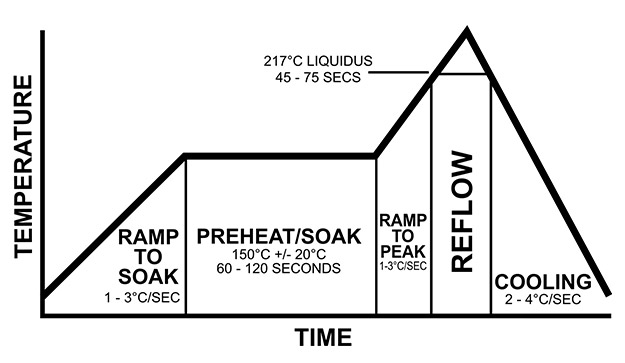
The reflow oven was a good 10 feet long, but electronic hobbyists can accomplish much the same thing with a toaster oven or even a hotplate.

There's not much to see on the outside of a reflow oven; it's just a long, boxy-looking machine. Inside, there are multiple heat zones, to precisely control the temperature as boards move through it on a conveyor system.
Machine-vision check
After the reflow process, yet another vision system checks that everything looks as it should. (Bet you didn't see that coming ;-)
Repeat and rinse
All of the above was to put components on just one side of the circuit board, and there are two sides. So the boards are flipped over, and go through the same sequence of operations to attach parts to the back side. (When the boards go into the second reflow oven, the solder on the underside of the board will obviously melt again. Fortunately, the surface tension of the liquid solder is enough to hold the previously-mounted parts in place, and keep them from falling off.)
The last step is a cleaning process that removes the leftover flux that was in the solder paste to make it wet well to the components and PCB pads, and makes sure the surfaces of the board are squeaky clean. Any surface contamination could result in problems down the road, after the boards had been in the field for a while.
As with pretty much everything else in the factory, the history of every circuit board (including sources and lot numbers of the components on it) is logged into the factory's master database. The amount of data stored there must be staggering.
Lens Assembly
We also saw a lens-assembly area that was off-limits for picture-taking. It was a lot like all the other lens assembly lines I've seen in the past. (Read about my extremely rare tour of Canon's Utsunomiya lens factory for details of one such facility, and my tour of Sigma's Aizu lens factory for a much more in-depth look.)
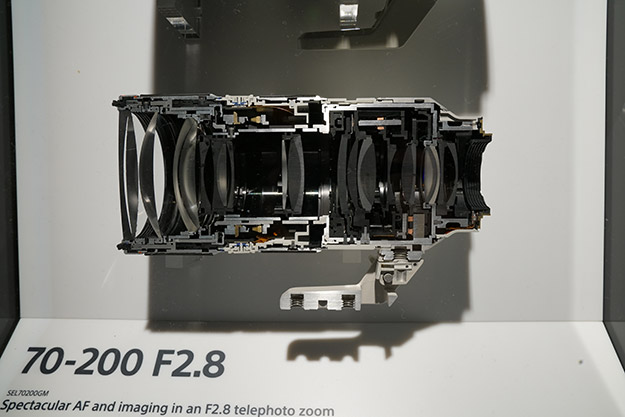
One thing I did notice that was different from the Canon or Sigma factories is that there were "clean rooms inside clean rooms" in Sony's plant. The entire lens assembly area was a clean room, with workers wearing "bunny suits" to keep dust from their clothing, hair dander, loose skin cells, etc from contaminating the production area. But in the Sony factory, there were special extra-extra-clean areas, walled off from the other sections with plastic curtains, suspended from the ceiling. The curtains extended to perhaps a foot from the floor, and there was a continuous flow of highly-filtered air from grilles in the ceiling downward, and into air-return registers at floor level. This way, any dust that might be kicked up anywhere would be swept down by the airflow, providing even higher levels of cleanliness than the "normal" clean room around it.
Worker Training
When we were there, Sony was just training a new set of production-line workers. Again, no photos were allowed :-/ I'm not good at estimating numbers of people, but I'd guess that there were perhaps 50 new hires being trained at that time. (When we asked, Sony said that the training schedule is variable, depending on needs, but that they typically train a new batch of workers every 3-6 months.) What we saw was the "classroom" training, before workers go onto the line. It takes two weeks to train each worker; one week in the classroom, and another week paired with an experienced worker on the production line itself.
The training was interesting; there were three parts to it. First was learning how to put tiny screws into tiny holes, over and over again. The repetition involved to train the workers for this was frankly mind-numbing to contemplate. These screws were tiny: Look over your camera to find the smallest screws visible on the outside. There are screws inside that are even smaller. Each block must have had 300 or so threaded holes on it that the workers needed to fill one after another, as quickly as possible. A trainer walked up and down the rows of prospective workers, with a stopwatch and clipboard in hand, stopping from time to time to comment to one or another of the trainees. I don't know how many days they spent putting crazy-tiny screws into crazy-tiny little holes, but doing so is one of the most fundamental tasks on the assembly line, so they need to be able to do it fast and accurately.
As mentioned earlier, if they can't come up to speed after the screw-driving training, they're given a chance to repeat that part of the course. Even at that, about 30% of recruits wash out at this step. After the screwdriver training, the trainees split into two groups, one learning soldering, the other practicing inserting delicate flex-circuits into connectors. Once each group has finished with their segment, they swap to practice the other task. All workers go through classroom training on all three skills.
As you might expect, given how densely packed things are inside cameras, soldering involves itty-bitty wires and other components. I expect there are other, more advanced tasks that are trained for as well, but when we were there, the workers were all learning how to get the right amount of solder on tiny pads, with proper wetting. (That just means that the solder melted and flowed to cover all of the pad. If it doesn't do that, there's a chance you might have a "cold" solder joint, meaning that the solder isn't actually bonded to the pad or component, so can come loose down the road, due to vibration, temperature cycling, etc.)
Here, the practice elements were circuit boards maybe 3 x 5 inches or so in size, with what had to be a thousand or more tiny pads on them. Soldering iron and fine solder in hand, the worker would move from one pad to the next as rapidly as possible, depositing just the right amount of solder and making sure it was a good joint.
The last part of the classroom training we saw was flex-circuit insertion. Here, the trainees had little circuit boards (again, in the general size range of 3 x 5 inches), this time with a dozen or more connectors of different sizes on them. They had little bins of flex-circuit stubs (just an inch or two long) that they'd pick up with tweezers and insert into the variously-sized connectors. This looked to me to be the most challenging task. The flex-circuits are, uh, flexible. So it takes a fair bit of skill to handle them with tweezers and get them fully-seated into the connectors without the flexible material buckling. (I know, I've tried it when repairing or upgrading my laptops sometimes.) As with everything else, they practiced over and over, always working against the clock.
In the training area as well as the rest of the factory, I was impressed with the work ethic. It's possible things were quieter because they knew they had VIP guests touring, but these people *crank* it! No talking or shooting the breeze with their neighbors on the line; it looked like total concentration. The operation was also smooth. Thinking about it, this has been a characteristic of every camera or lens production line I've toured to date, and it makes sense. There's no hiccups or drama, just focused attention and a steady flow of parts and products from one station to the next. There's testing and checks at virtually every stage of the process, too, so any problems that do occur aren't propagated further down the line.
I've seen enough production facilities now that it's easy to become blasé about the speed and precision. It's really impressive to pause for a moment and look at it with fresh eyes again, though. Modern cameras are an incredibly complex melding of sensors, analog electronics, processing circuitry and mechanical parts. Each one is a small miracle in its own right, and factories like Sony's Chonburi plant crank them out by the thousands, with very, very low problem or failure rates.
While I don't have the illustrations to explain or the memory to recall all the details, it was clear from both the morning presentation and tour of the production lines themselves that quality control and process improvement are at the very core of the Chonburi plant. The production database must absorb millions or tens of millions of data points every day, representing tests and checks at virtually every process step in the factory. Big-data software then lets the QC and production-management specialists comb through it all, looking for small trends or drifts in specs. The goal is to find and correct a drift before the part or process gets out of spec, and to maintain ever-tighter control and tolerances across the entire system. If something does go wrong, they can trace the problem back to its origin. (Something always goes wrong; Murphy's Law applies in Thailand, too :-)
All in all, it was a very impressive demonstration of production prowess, which was obviously the point of the whole trip for Sony. Thailand in general and Bangkok in particular were also fascinating places that I'd like to return to, particularly given how much time I spent stuck in the hotel room doing non-trip work :-/
Thanks to Sony for being such fantastic hosts, and for sharing some of what goes into making one of our favorite cameras. (The A7R Mark II is a truly amazing product: It won our Camera of the Year award in 2015 .)
• • •
Local color: a night out and about in bangkok.
While the factory tour was the main focus of the trip, Sony also treated us to a bit of Thai culture in the process. Here are some shots from our second night in Bangkok, featuring a visit to Bangkok's huge and bustling Chinatown.

Bangkok has some spectacular architecture and unique spaces. This open-air restaurant was on the 52nd-floor level of a 70+ story skyscraper. It was pretty windy at that altitude, but the design of the space and surrounding walls blocked all but the mildest of breezes. You can't tell in this still shot, but the clouds you see around the moon were just racing past. Can you recognize any of your favorite photo editors in this shot? :-)

As noted, we went for a little walkabout of Bangkok's Chinatown area after dinner. Established in 1872, it's one of the oldest Chinatowns in the world, although that probably has little relevance to how it looks today. It's certainly big and bustling, though. At night, it's mobbed with people sampling the wares of hundreds (thousands?) of little street stalls, offering a variety of food. This is a look down a main thoroughfare, giving you some idea of its extent and the number of people there.

There were lots (and lots and lots) of piles of fresh food, some of it more appetizing in its uncooked state than others. I wonder how many tons of ice the Chinatown street vendors go through on an average night, keeping their raw materials cold and fresh? It's hard to convey just how many food stands there are!

There was a lot of seafood on display; jumbo prawns seemed particularly popular.

Squid and octopus were big sellers; this kind of roasting over open coals was quite common. I had the feeling some of the presentation was aimed at drawing in tourists looking for a thrill. On the other hand, I'm a particular fan of squid tentacles myself, so they may just be catering to local demand.
I didn't get a chance to sample many of the offerings, since we'd just had dinner, and the group was moving through the market at a pretty steady pace. I want to come back to Thailand on my own sometime, with more opportunity to be a tourist. (I ended up missing out on a lot this trip, because of work that piled up on me from Stateside.) This Chinatown food is enticing, but I'm really wanting to check out the phenomenal Thai street food, as my friend Gordon Liang did . I'll be sure to look up his article, whenever I have a chance to go back.

It's got to be hard work, being a Bangkok street vendor. Get up early to get the food and supplies, schlep everything to your patch of pavement and set up, serve passers-by for hours, then knock it all down, haul it off to wherever you keep it stowed, and then do it all over again the next day. A lifetime insomniac, I envied this woman her ability to drop off for a nap in the middle of the chaos of Bangkok Chinatown at night. (On the other hand, if I had to run a Chinatown street-food business, I'd probably be ready to nap at a moment's notice as well.)

Another shot looking down on one of the main drags. Bangkok traffic is legendary; cars, tuk-tuks (see below), motor scooters and bicycles compete for every square inch of pavement. It does move eventually, but at its peak, it can take an hour just to move a couple of miles.
Bangkok does have a pretty decent mass-transit system, but it lacks the clocklike precision of Japan's. It took a bit of adjustment on my one outing on my own there, as two weeks in Japan prior to Thailand had me accustomed to just hopping on the train that showed up when Google Maps said it should. The different transit lines are also much more clearly marked in Japan. (Or maybe I just wasn't picking up on the visual cues in Bangkok.) In any event, I soon learned that I had to pay a lot more attention to the train numbers than their arrival/departure times. I would have caught on quicker if I wasn't so fuzzy-headed from a couple of weeks of sleep deprivation, but I had quite the "scenic tour", as I jumped on a train arriving/departing at the designated time, only to discover it was an entirely different line than the one I had intended ... then doing that immediately again, trying to get back to my original route.
Regardless of my misadventures, Bangkok's mass transit seems pretty functional. It doesn't handle remotely the volume of the Tokyo Metro system, though, so there's lots and lots of people needing to get places using the roads.

I just mentioned tuk-tuks; these are three-wheeled open-air taxis that are ubiquitous in Bangkok. Given Bangkok's climate, which varies between hot, hotter and beastly-hot, tuk-tuks are more interesting for the experience than for getting around on a practical basis. Definitely avoid them during peak traffic times, as you'll be sitting in tropical heat breathing exhaust fumes for hours. Taxis are also actually cheaper for longer trips. I don't have any extensive knowledge myself, but whether tuk-tuk or taxi, you need to pay attention and assert yourself to avoid getting ripped off. Even then, tourists usually end up paying a lot more than locals. Check out this quick guide to hiring taxi or tuk-tuk , if you're planning a trip there.

This young woman was very sweet; she had a street stall selling some sort of squid thing. She offered me a sample, but I was out of Thai Bhat at the time, so said I couldn't pay. She said "no problem, here, taste!" She was just happy for me to have the experience of her food.
Coming to Thailand, I realized that my prior experience of Thai people was mainly limited to staff at Thai restaurants. So they were a naturally self-selected group who were friendly, outgoing, and customer-oriented. Meeting a broader cross-section of Thais in their home country, I found that a lot were in fact very friendly, but others were just people like anywhere else; some friendly, some less so, some polite, some rude, etc.
I'd also just come from spending two weeks in Japan, so shopping for a few minor clothing items in a Bangkok mall was a bit jarring by contrast. In Japan, store clerks are so accommodating they border on obsequious. In department stores there, I've often felt as though it was the clerk's life mission for me to have a perfect experience at their store that day. Not that American store clerks are awful, but shopping in Japan is really a whole different experience.
Speaking from my vast experience of an afternoon's shopping in Bangkok </irony>, the Thai seem quite different. Some store staff were polite and helpful, others were outright rude. It felt more like America, perhaps even with a bit more of an edge.
Maybe it's just that there's more of a range; there were certainly plenty of Thai people I met like the young woman above, who was just so pleased to be able to give me a happy experience of her culture.
I very much want to return to Thailand, but with much more time and less work to stay abreast of. It's a fascinating culture that I just barely skimmed across on this trip.

Here's a closing shot from our next-to-last dinner in Thailand, on the island of Ko Samui. Three young men treated us to an amazing fire-dance performance. I liked this shot because I managed to get the nearly-full moon in the background and the little flame in the foreground that they used to light their batons and torches from.
In this act, the dancer was swinging a large mesh pot of something that was spitting sparks in all directions. It had to be a pretty large mass of material to burn for so long, while so much of it was being sprayed all around; this act must have required quite a bit of strength. It was certainly a spectacular effect!
Thanks to our hosts!
It was a fascinating trip, from start to finish. Anyone who knows me knows how much I enjoy factory tours and the chance to talk with camera and lens engineers. Getting to see Thailand for the first time was icing on the cake. Thanks to everyone at Sony and to our Thai hosts for such a great experience!

Our Lamphun facility
The facility takes its design inspiration from our signature charm bracelet. The circular shared area - known as the Halo - at the centre of the facility resembles the bracelet. The buildings, which spread off from the Halo, resemble the charms.
Built to LEED (Leadership in Energy and Environmental Design) standards, the facility is leading the jewellery industry in terms of green jewellery crafting.
The facility meets some of the highest social responsibility and sustainability standards, offering excellent working conditions and consuming 18 percent less energy and 45 percent less water than a conventional jewellery crafting facility.
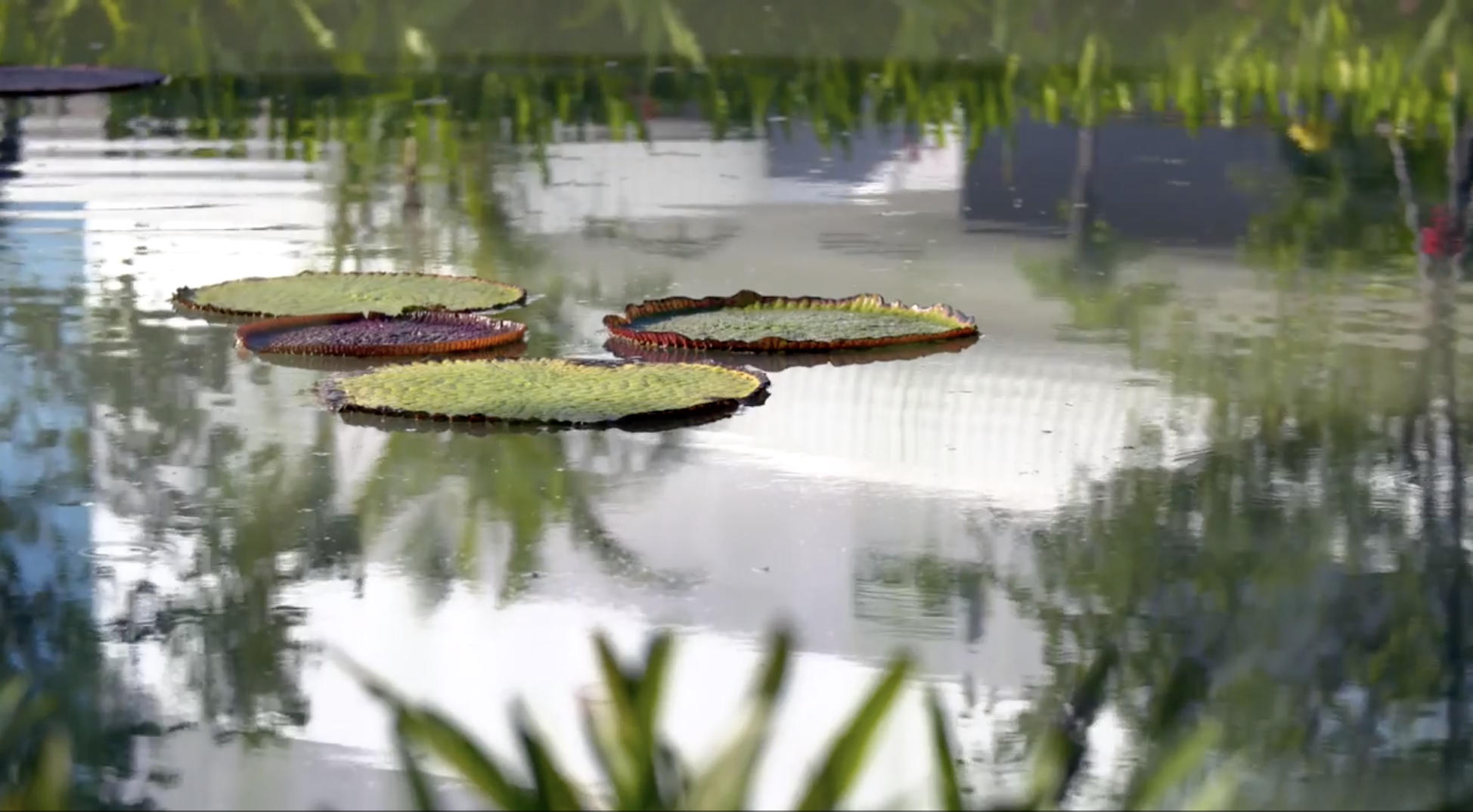

- Subsidiaries
- Vision & Missions
- Factory Tour
- Awards & Certificates
- Markets & Distribution
- Sustainability
- Privacy Policy
- Visitor - Privacy Notice - Eng
- Visitor - Privacy Notice - Thai
- CCTV POLICY (ENGLISH)
- CCTV POLICY (THAI)
- Job Applicant Consent - Eng
- Job Applicant Consent - Thai
- Customer - Privacy Notice - Eng
- Customer - Privacy Notice - Thai
- Vendor - Privacy Notice - Eng
- Vendor - Privacy Notice - Thai
- Data Subject Right Request Form - Eng
- Data Subject Right Requeset Form - Thai
- Personal Data Breaching Form - Eng
- Personal Data Breaching Form - Thai
- Kingfisher 108

FACTORY TOUR
Let us take you through our major operations: Frozen Seafoods Operations and Canning Operations.
At every stage, you will find our production processes conforming to the high standards demanded by international markets. Stringent quality assurance and control systems have ensured we meet our customer requirements as certified by many standards.
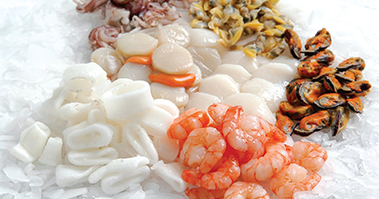

- Upcoming Events
- Signature Events
- Corporate Social Impact Awards
- AMCHAM Academy Residential Program
- Policy – Five to Thrive
- AMCHAM & BMA Sustainable Digital Classroom
- T-AB Magazine
- AMCHAM Yearbook
- Member Directory
- AMCHAM Membership
- Affinity Program
- Member-Get-Member
- AMCHAM Platinum Member Stories
Manufacturing Committee: Jelly Belly Factory Tour
Manufacturing committee: jelly belly factory tour– june 2.
Organized by: Manufacturing Committee
Event Highlights:
A factory visit at the Jelly Belly Candy Company located on the WHA Eastern Seaboard Industrial Estate in Rayong was a great success. The members had an opportunity to see the entire production process from making the candy to packaging them. Before leaving the factory, the visitors were also given a small box of Jelly Belly as a souvenir to enjoy.

Related News / Blog
Manufacturing committee: accelerating your decarbonization journey, manufacturing committee: global energy and supply chain risks, factory visit to kenvue (j&j consumer health company), privacy overview, amcham membership tiers.
PLATINUM / GOLD / SILVER MEMBERSHIP
Please contact the office for a list of enhanced benefits for higher tiers of AMCHAM membership.
CORPORATE MEMBERSHIP
Corporate Membership is available to companies registered in Thailand. Corporate Members receive a listing in our Member Directory, the right to nominate up to 10 representatives, and 8 vouchers that may be used at our Monthly Luncheons (a value of THB 8,000). Members are entitled to one vote.
Entrance Fee: THB 10,000 Annual Dues: THB 32,000
ASSOCIATE STATUS
Associate Company Status is available for companies without registration in Thailand. Their application should be accompanied by registration where the company is headquartered. Associate Companies receive a listing in our Member Directory and the right to nominate 2 representatives. Associate Companies are not considered AMCHAM members and are not entitled to a vote.
Entrance Fee: THB 10,000 Annual Dues: THB 20,000
INDIVIDUAL STATUS
Individual Status is available for those who are not employed. Individuals are entitled to participate in AMCHAM activities at the membership rate, but may not hold elective office or leadership roles, nor are they allowed to vote. A retiree or student visa is usually requested as an entry qualification for this type of membership.
Entrance Fee: THB 10,000 Annual Dues: THB 10,000

- South Africa
- United States of America
- Bali Packages
- Saudi Arabia
- Switzerland
- United Kingdom
- Himachal Pradesh
- Jammu and Kashmir
- Maharashtra
- Uttar Pradesh
- New Zealand

Culture and Heritage
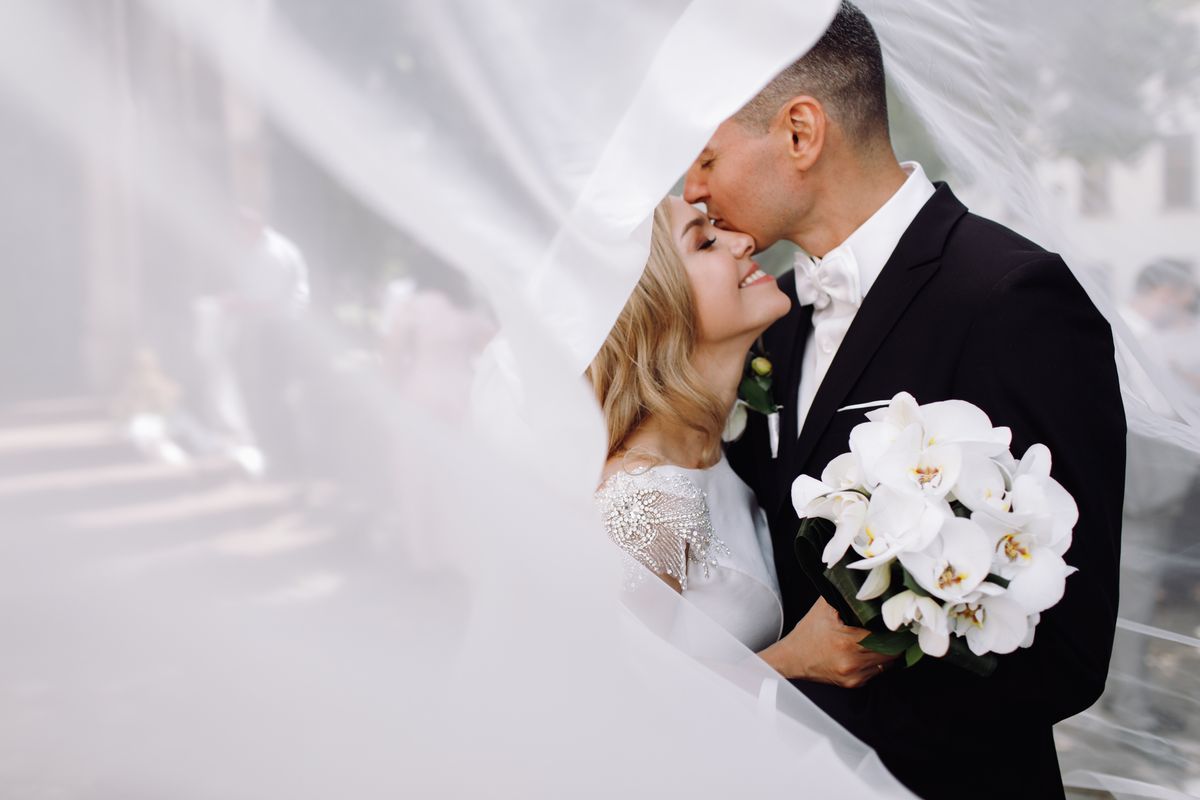
- Testimonials
Thailand Vacations Customized for You
Discover a truly unique world in thailand at the full moon party. the white, sandy beach of phuket and krabi are perfect for getaways. shop till you drop at the shopping centers in bangkok and indulge in the street food. taste the blend of modern lifestyle and thick culture from your customized trip.
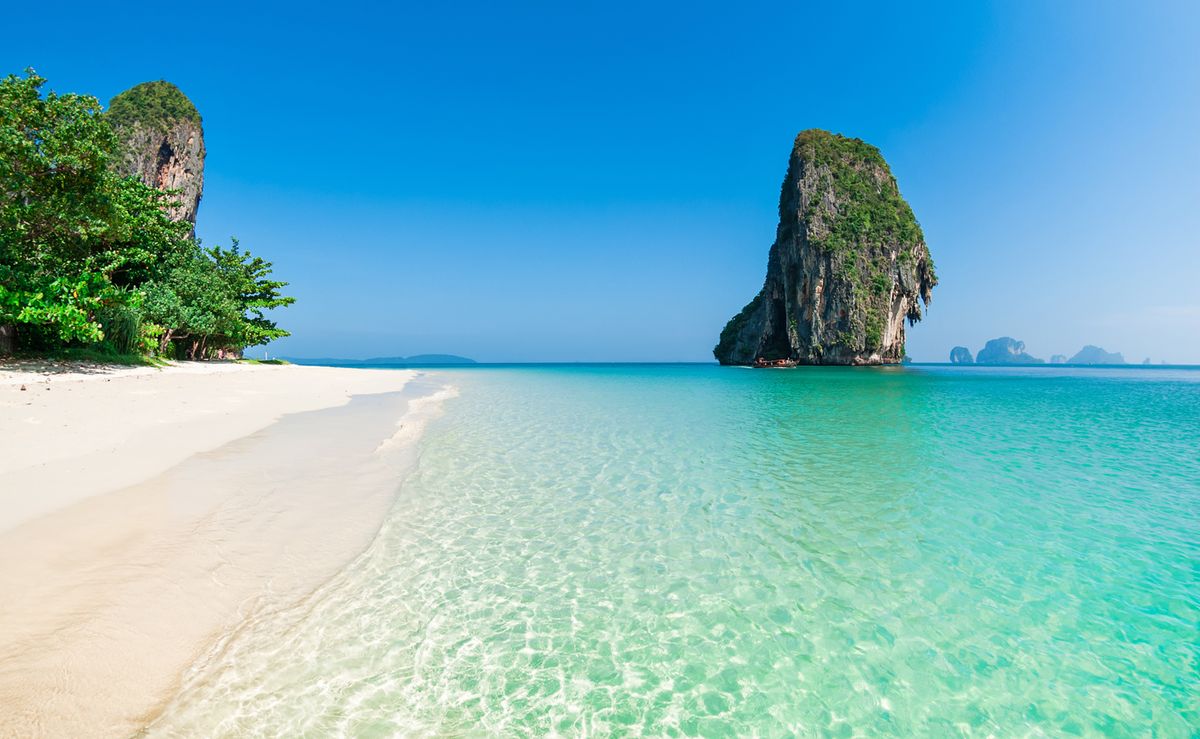
Thailand Fixed Departures with Flights
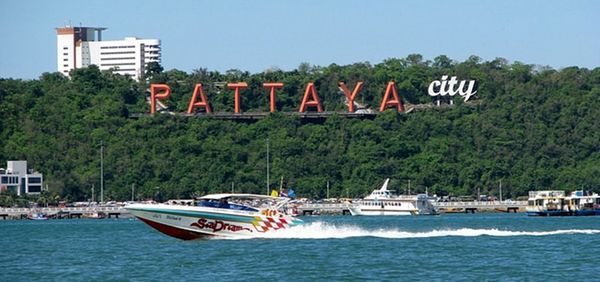
Chalo Thailand
Pattaya 3N, Bangkok 1N
Standard Thailand Package for Budget
- To and Fro Economy Class Flights (ex DEL)
- Stay in 3 star hotels
- Daily Breakfast
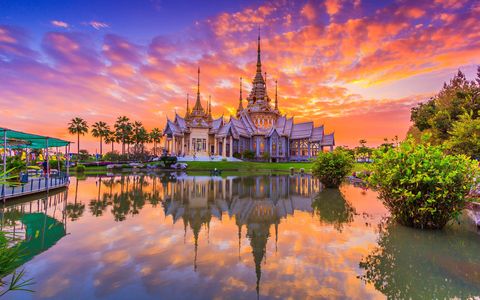
Thailand Dhamaka with Air Asia
Pattaya is a popular tourist destination located on the eastern coast of Thailand, approximately 150 kilometers (93 miles) southeast of Bangkok. It is...
- Return Airfare (Ex-Ahmedabad)
- Stay for 3 Nights at Pattaya Hotel (Breakfast)
- Half Day Coral Island Tour with Indian Lunch – Sea...
Far East Multi Countries Tour

Asian Extravaganza
Singapore 3N, Kuala Lumpur 3N, Pattaya 2N, Bangkok 2N
This package encompasses a diverse and exciting journey through Singapore, Kuala Lumpur, and Thailand's Pattaya and Bangkok. Beginning with a comprehe...
- Return Economy Class Airfare
- 10 Night’ Accommodation in All 4 Places
- Continental Breakfast and Indian Veg / Non Veg Lun...
Phuket A Short Getaway

Phuket a short getaway

Phuket Not to Be Missed!
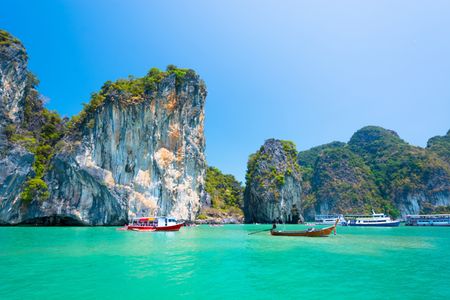
Phuket Fully Loaded
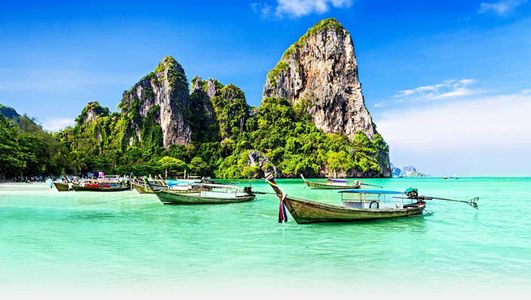
Unbeatable Phuket
Budget trips for friends, weekend bangkok special, budget phuket for friends, phuket weekend getaway, phuket 5 star stay at mai hous..., short break in thailand.
Pattaya 2N, Bangkok 1N
Budget Trip with Friends
Pattaya 2N, Bangkok 2N
Best of Pattaya and Bangkok
Pattaya 3N, Bangkok 2N
Party in Thailand with Friends
Phuket and bangkok specials, phuket and bangkok for first t....
Phuket 2N, Bangkok 2N

Must See Phuket and Bangkok
Phuket 3N, Bangkok 2N
Phuket and Bangkok for Kids
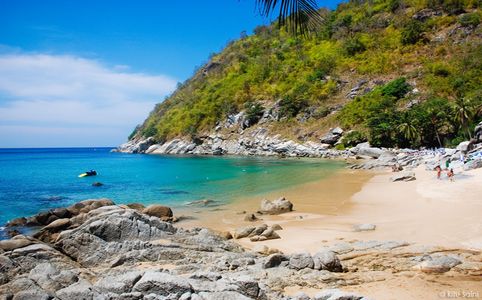
Best of Phuket, Pattaya and Ba...
Phuket 2N, Pattaya 2N, Bangkok 2N
Family Friendly Bangkok Pattaya
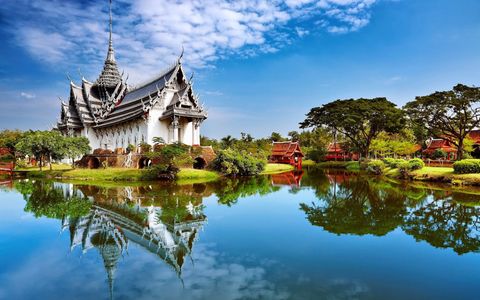
Essentials for Families
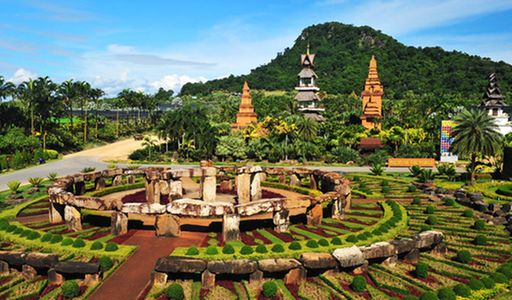
Best of Pattaya and Bangkok fo...
Family fun in pattaya bangkok.
Pattaya 3N, Bangkok 3N
Kids Friendly Pattaya and Bang...
Pattaya 4N, Bangkok 2N
Discover Koh Samui

Beautiful Samui with Krabi and...
Krabi 2N, Koh Samui 2N, Phuket 2N
Exotic Samui with Phuket and B...
Phuket 2N, Koh Samui 2N, Bangkok 2N
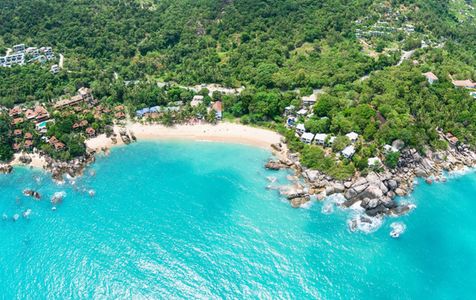
Exciting Samui and Bangkok
Koh Samui 3N, Bangkok 2N
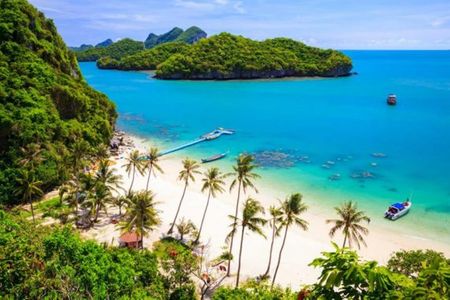
Mesmerizing Samui and Phuket
Koh Samui 2N, Phuket 3N
5 star experiences

Bangkok with Marriott
Luxury pattaya and bangkok, hyatt regency phuket resort.

Krabi Phuket in Style
Krabi 2N, Phuket 2N
- Customer Support
- Terms of Use
- Privacy Policy

Bangkok Factory Tours
Factory tours & tickets, grand palace & emerald buddha half-day tour.
Embark on a tour to visit the marvelous Grand Palace and explore its grounds which feature one of the most well-known temples in Thailand, Wat Phra Kaew, or
Explore other Tours & Activities in Bangkok
A new place - so much to see and so little time. Bus tours let you cover more ground than two feet allow, and keep you in the know as you cruise around town.
Multi-Day Tours
Get immersed in a place with multi-day tours.

Hop-On Hop-Off Tours
Get the best of both worlds with hop-on hop-off tours: all the insider information and all the flexibility.
Walking Tours
Walking tours can get you up close and personal to an area's top attractions, from the big-ticket items to the hidden local gems.
Sit back and relax as you tour along the water.
Cultural Tours
Traveling done right should show you different cultures - join a cultural tour for the insider knowledge.
Private Tours
Skip the crowds and join a private tour for an in-depth experience.
Train Tours
On train tours you can go the distance and do your sightseeing from the comfort of your seat.
Getting to Bangkok
Flights to Bangkok
Bangkok Packages
Bangkok Hotels
Explore other things to do in bangkok.
It's always nice to wander around and get lost in a place - until you're actually lost. Tours take the mystery out of travel and bring you right to the action.
Classes & Workshops
Return home with more than just memories - add some knowledgeable tips and tricks gained from classes and workshops.
Concerts & Shows
Make your trip extra special with a concert or show. When it comes to entertainment, they should always have a place on the itinerary.
Day trips keep it simple and exciting while traveling. See all the best parts of a place by joining in on some great bite-sized excursions.
The world is better on the water. Let your travels continue beyond the shoreline with the fantastic boat tours on offer.
Family-Friendly
Vacationing is a great way to bring the family closer together. Make the most of your time with activities that everyone will enjoy.
Make special memories with special people while enjoying the romantic side to travel.
Night Activities
With sundown comes a whole new side to an area. Find the best places and activities to check out at night.
Animals, Nature & Parks
For the world at its most spectacular, Mother Nature does it best. Head outdoors to find a whole new appreciation for nature and animals on your travels.
Bring home more than photos with a successful shopping venture.
Food & Drink
Sightseeing alone won't satisfy your cultural palate. Great food and drink will make a good trip even better.
Sights & Landmarks
Tick off some bucket-list-worthy sights and landmarks near you and fill your photo album with great snaps.
Fun & Games
There's always room for fun and games on any vacation. To get the endorphins going, find the good times near you.
Get your fill of culture, arts or history with a fantastic museum primed to impress.
Outdoor Activities
Make the great outdoors even greater with these activities. Get in touch with nature and add some adrenaline wherever you are.
Water Sports
Do more than dip your toes in, with great opportunities to take to the water for some fun.
Home / About
Cherdchai Motors Sales Co.,Ltd.
- 1963 start to manufacture a wooden Bus Body - 1965 We are the first steel body manufacture in Thailand - 1975 We were the strategic partner of Isuzu to manufacture the bus body on Isuzu monocoque chassis in Thailand - 1987 We celebrated for 1,200 units of bus body on Isuzu chassis - 1988 exported 25 buses to Malaysia Chredchai for Truck Body manufacturing (Wooden Body)
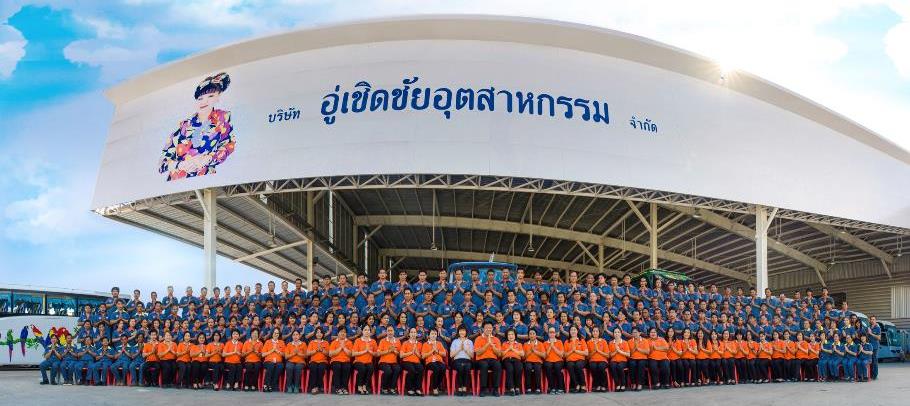
Company providing interprovincial bus services, tour and entertainment bus service, for transportation and logistic more than 65 years.
Cherdchai Motors Sales started in business as largest bus service and body building factory before expanding into other areas. Cherdchai business include interprovincial bus services, bus body builder factory, authorized Volvo bus dealership and real estate development.
The company has more than 1,200 buses running interprovincial lines under a concession From The Transport Co, a state enterprise under the Transport Ministry. Most services are long-haul routes In the northern and northeastern regions of Thailand.
Cherdchai Tour also operates medium-distance services between Bangkok and Nakhon Ratchasima, and some eastern destinations.
Providing quality passenger transport services that meet national standards with an emphasis on safety coupled with friendly service Including the development of the company's technology to be modern and environmentally friendly. To serve passengers to their destinations safely and with a sincere impression.

Cherdchai Tour
Manage Bookings
News/Promotions
Customer Support
เราใช้คุกกี้เพื่อมอบประสบการณ์การใช้งานที่ดีที่สุดสำหรับคุณ ในการใช้งานเว็บไซต์ของเรา ถือว่าท่านยอมรับการใช้คุกกี้ตามที่ระบุใน Privacy Policy

- Thailand Tours
- Honeymoon Packages
- Luxury tours
- Wildlife & Safari Tours
- Family Holidays
- Adventure Tours
- River Cruises
Expats Services
- For Travel Agents
- Thailand River Cruises
- Cultural Tours in Thailand
- Luxury Tours in Thailand
- Beach Holidays in Thailand
- Wildlife Tours in Thailand
- Wellness Tours in Thailand
- Adventure Tours in Thailand
- Family Tours in Thailand
- Honeymoons in Thailand
- Cannabis Tours

Services for Expats Living In Thailand & People Planing to Move to Thailand
- Visa Services
- Health Insurance
- Open Thai Bank Account
- Full Packages
- Tourist Visa (TR)
- Thailand Retirement Visa
- Long Term Resident (LTR Visa)
- Thailand Elite Visa
- Business Visa (Non B)
- Thailand Education Visa
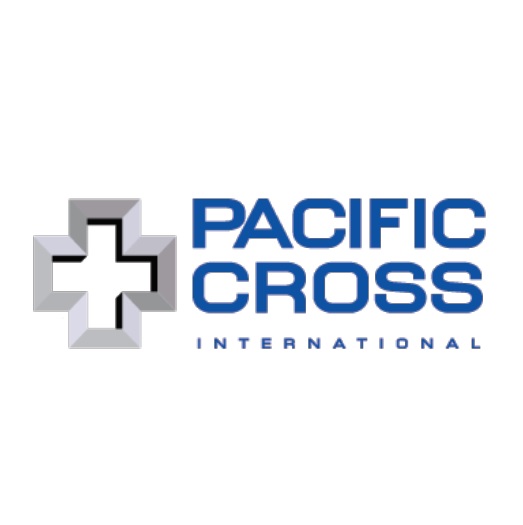
For the First Time in Thailand and in South East Asia, You can Now Visit a Cannabis Farm for a Half Day Tour and Get a Full Knowledge on How to Grow Cannabis with all Steps, Different Types of Seeds, Difference Between Cannabis and Hemp, and Many more.
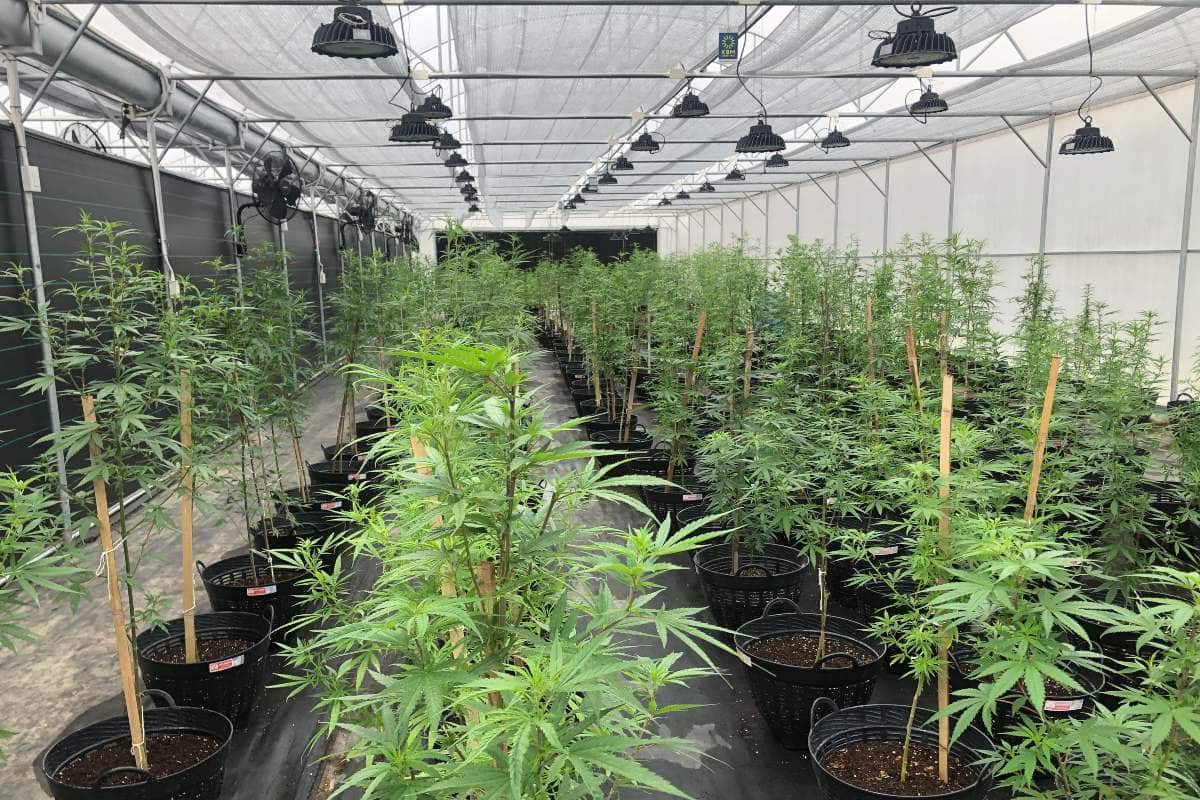
Tour Itinerary
- You will be Picked up by our Driver from your Hotel Lobby (Pick up from Bangkok or Pattaya) and Proceed to the Cannabis Farm
- Arrive at the Cannabis Farm and Start the Tour by Entering the Clonning Room to See how the Whole Process Starts, Our Professional Guide will be Explaining Step by Step of the Whole Growing Process.
- Then You will Visit the Mother Room and See the Cannabis Plants and How they Look Like during the Second Step of Growing (The Guide will be explaining the Difference Between the THC and CBD and the Different Types of cannabis and Hemp).
- Then you will go to See the Final Step of Growing which is the Flowering Step of the Plant.
- After Enjoying the Farm Exploration, you can have the Chance to Smoke Cannabis from the Farm if you want, and you can Buy the Farm’s Cannabis Based Products as well including cosmetic Products, Food and Beverage Products, and Many More.
- Then, You will Go to the Farm’s Restaurant to Enjoy a Delicious Lunch with Some cannabis Seasoning and Tastes.
- After Lunch, Have a Short Workshop by moving a Cannabis Tree from a Pot to another (Part of the Process of Growing the Cannabis Tree).
- After Enjoying this Half Day Trip and Exploration of the Farm, Our Driver will Send you back to your Hotel in Bangkok or Pattaya.
Tour Includes
Tour Excludes
Book This Tour
Frequently Booked Together
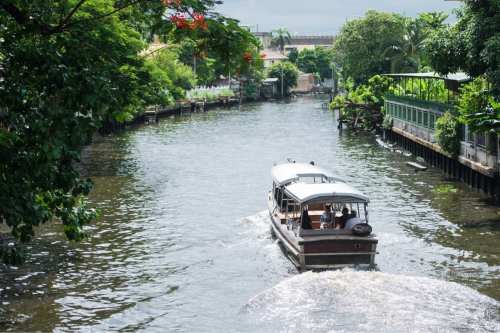
What our Customers Say about us
We Customize Itineraries For Our Clients Based on their Needs and Preferences & We Suggest & Recommend the Best to Explore based on these preferences.
We are the Travel Experts that You Can Trust in Thailand with more than 20 Years of Experience. We Will Show you The Best of Thailand better than anyone else.
Our Itineraries and Programs are Exceptional and Designed by Destinations’ Experts in Thailand, and handcrafted in Style by the Agency’s Management.
We have Been Awarded and recognized by International and Local Organizations for the Exceptional Service that we provide to our Customers.

19/60 Sixnature village, Soi 2, Tharang, Bangkok 10230, Thailand

Explore the Best of Thailand
- Move To Thailand
All Services
- [email protected]
- [email protected]
- +6623470613
Terms & Conditions
Become an affiliate, © all rights reserved.


NEW PRODUCT
Kewpie products that are new..

Tasty and easy tips with recommended menus along with KEWPIE products.
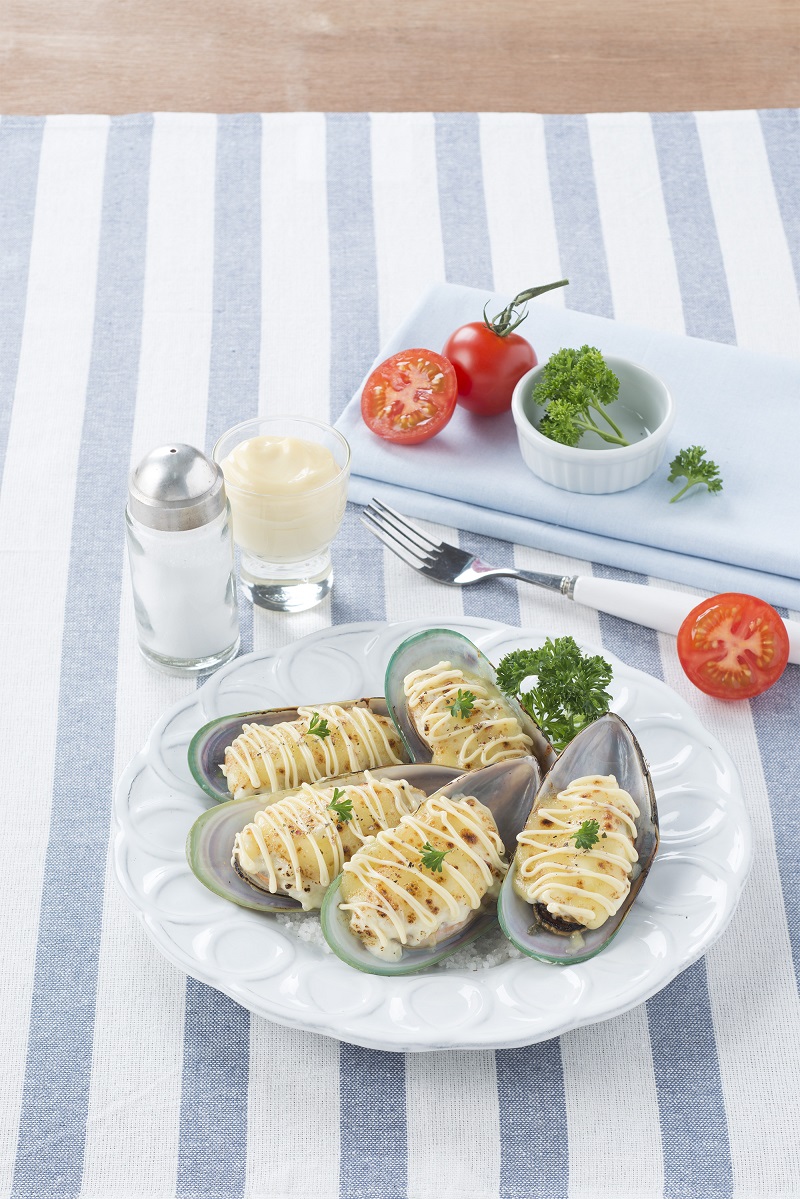
Mussel Au Gratin
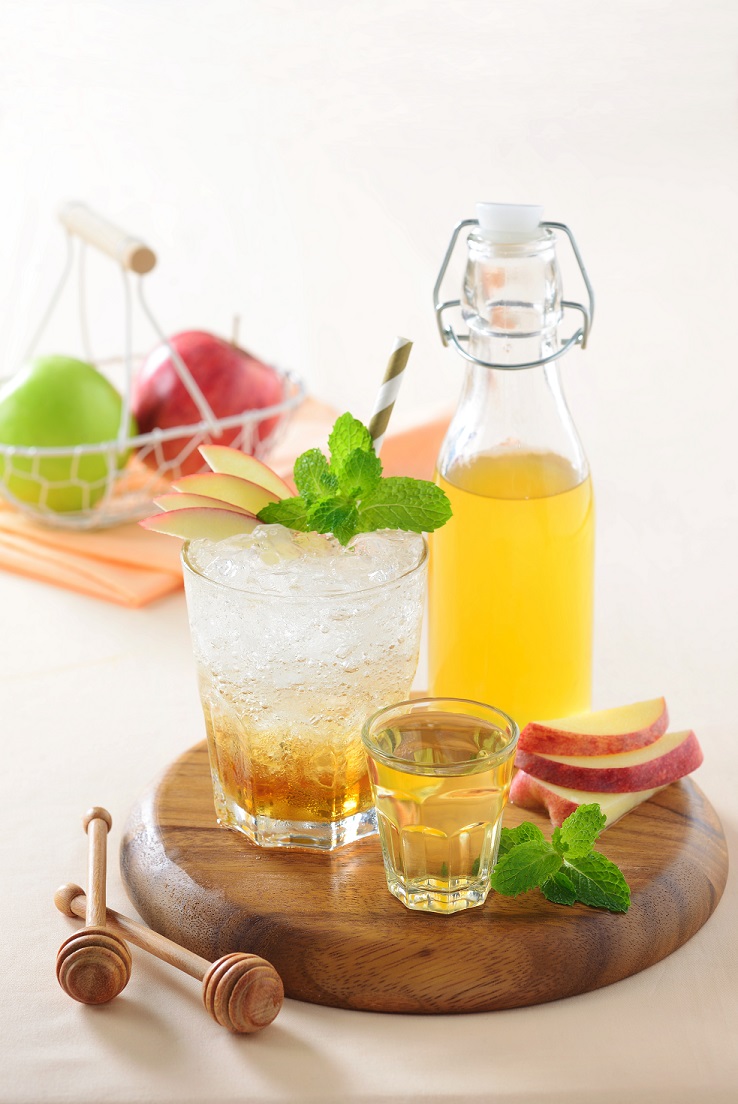
Apple Cider Soda
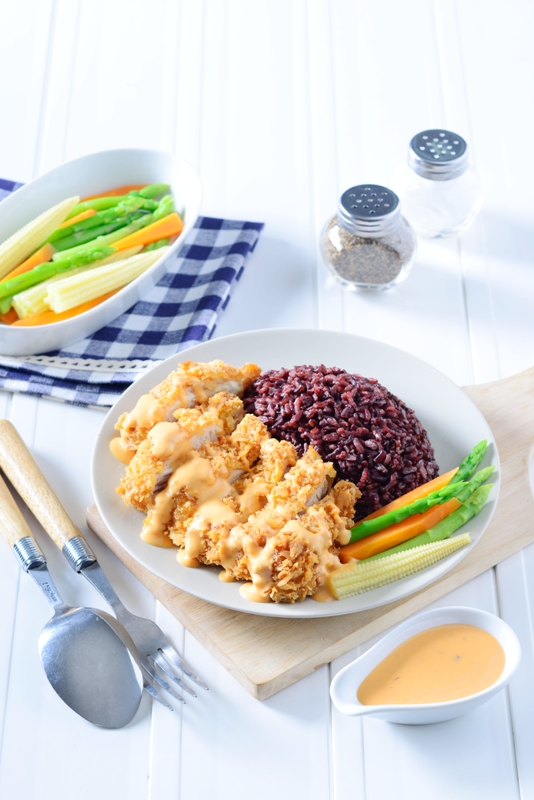
Riceberry with Thousand Crispy Chicken

Caesar Salad with Onsen Egg

Smoked Salmon Burger

Shrimp Tempura Soba Salad
Product categories, kewpie products that are popular..

Mayonnaise, Salad Cream

Ready-to-eat

Food Services
Kewpie channel, made the recommended menus easy with kewpie products and follow us on youtube video channel..

News & Event
Follow the latest news and activities of kewpie here..


- Upcoming Events
- Signature Events
- Corporate Social Impact Awards
- AMCHAM Academy Residential Program
- Policy – Five to Thrive
- AMCHAM & BMA Sustainable Digital Classroom
- T-AB Magazine
- AMCHAM Yearbook
Member Directory
- AMCHAM Membership
- Affinity Program
- Member-Get-Member
- AMCHAM Platinum Member Stories
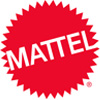
Mattel Bangkok Limited
Other Manufacturing
- Bangpoo Industrial Estate Export Zone 683 Soi 9, Moo 4 T. Praeksa A. Muang Samutprakarn 10280
- (0) 2324-0373
- (0) 2324-0789
- Visit Website
Established in 1998. Mattel Bangkok is a Global Manufacturing Hub for Diecast Toys and a subsidiary of Mattel Inc. USA which is a leading global toy company and owner of one of the strongest portfolios of children’s and family entertainment franchises in the world. We engage consumers through our portfolio of iconic brands, including Barbie, Hot Wheels, Fisher-Price, American Girl, Thomas & Friends, UNO, Masters of the Universe, Monster High and MEGA, as well as other popular intellectual properties that we own or license in partnership with global entertainment companies. Our offerings include film and television content, gaming and digital experiences, music, and live events. Mattel operates in more than 35 locations and our products are sold in more than 150 countries in collaboration with the world’s leading retail and ecommerce companies. Our mission is to create innovative products and experiences that inspire, entertain, and develop children through play.
Video Media

Gallery Image Mattel%20Bangkok%20Picture%20001.jpg
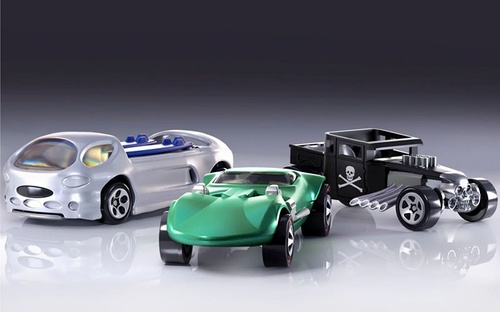
Gallery Image Mattel%20Bangkok%20Picture%20005_150124-072415.jpg
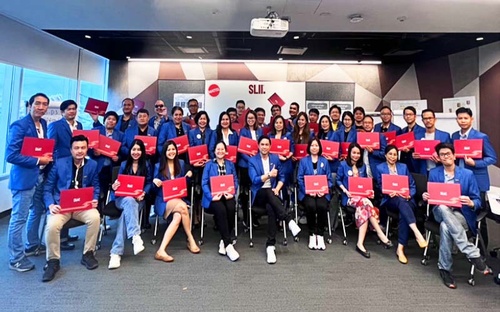
Gallery Image Mattel%20Bangkok%20Picture%20009_150124-072423.jpg
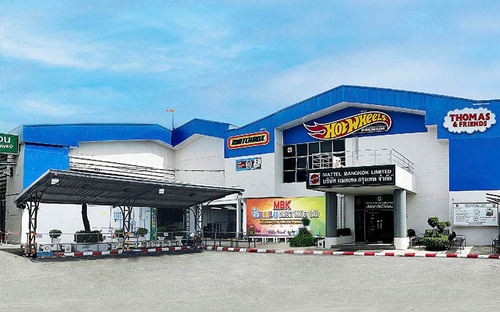
Gallery Image Mattel%20Bangkok%20Picture%20002_150124-072437.jpg

Gallery Image Mattel%20Bangkok%20Picture%20006_150124-072445.jpg
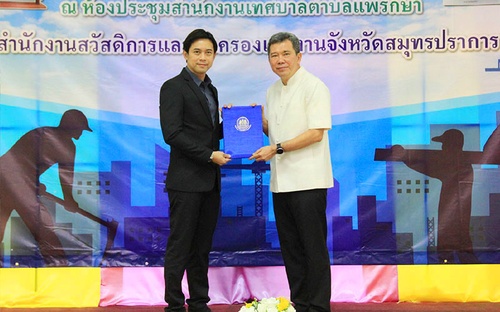
Gallery Image Mattel%20Bangkok%20Picture%20010_150124-072454.jpg
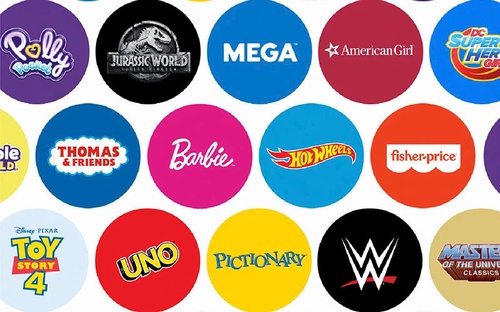
Gallery Image Mattel%20Bangkok%20Picture%20003_150124-072503.jpg
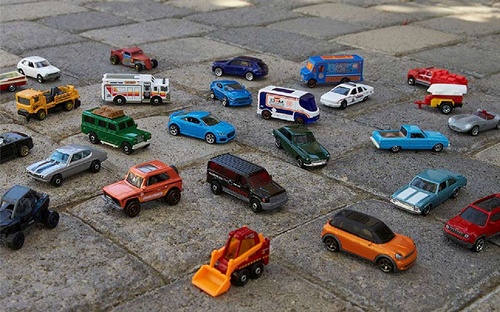
Gallery Image Mattel%20Bangkok%20Picture%20007_150124-072516.jpg
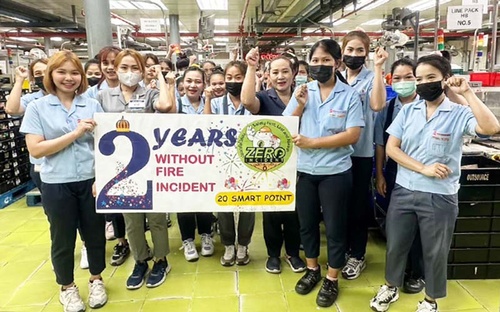
Gallery Image Mattel%20Bangkok%20Picture%20011_150124-072530.jpg

Gallery Image Mattel%20Bangkok%20Picture%20004_150124-072538.jpg
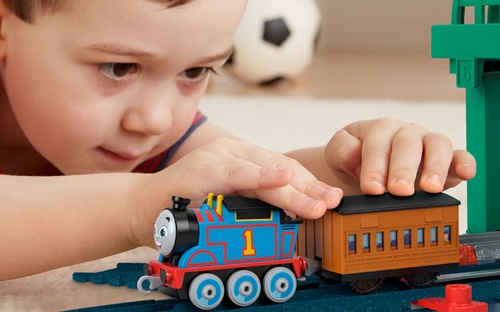
Gallery Image Mattel%20Bangkok%20Picture%20008_150124-072549.jpg
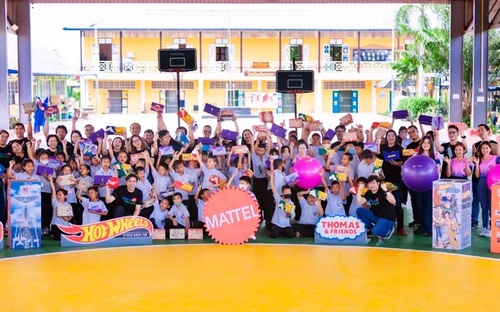
Gallery Image Mattel%20Bangkok%20Picture%20012_150124-072600.jpg
Rep/contact info.
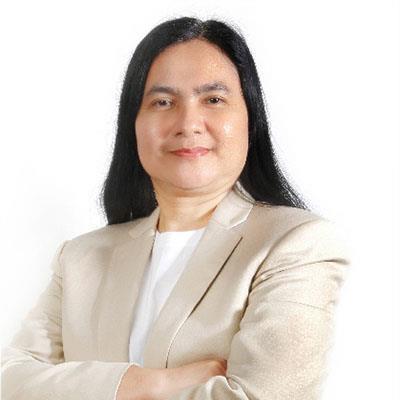
Tapanee Banmoo
Tapanee banmoo director human resources.
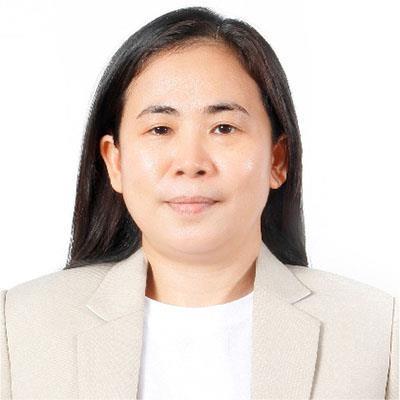
Vichittra Hongtong
Vichittra hongtong senior manager quality.

Patchadaporn Jaiwannae
Patchadaporn jaiwannae senior manager materials.
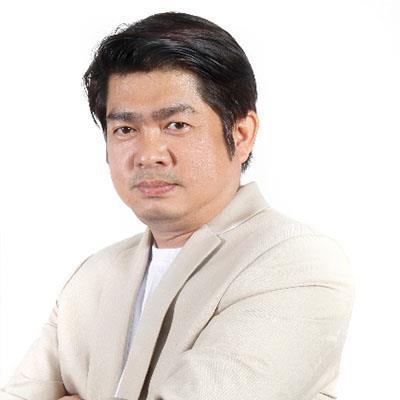
Sakda Jullasak
Sakda jullasak director manufacturing.
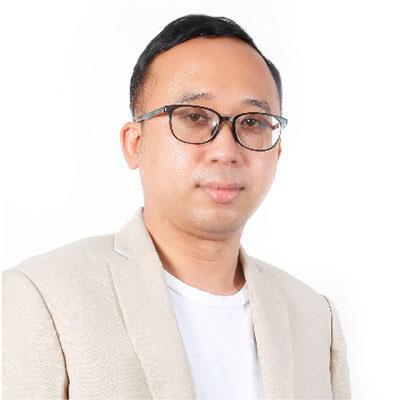
Pornthep Mangatanyoo
Pornthep mangatanyoo manager ehs.
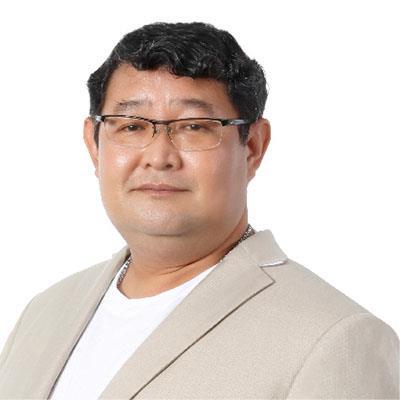
Mungkorn Meesom
Mungkorn meesom manager security.
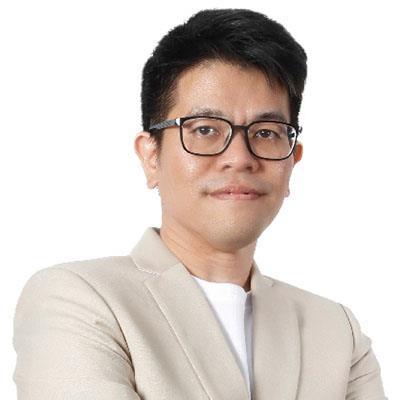
Jirawat Orapunsead
Jirawat orapunsead senior manager product engineering.
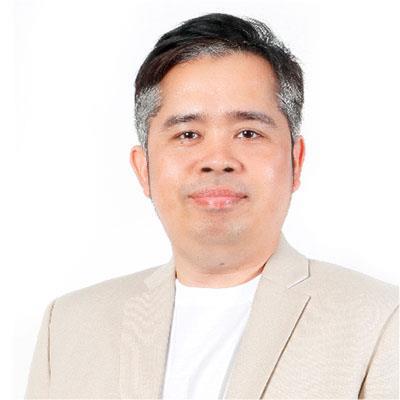
Payungsak Prasattong
Payungsak prasattong director finance.

Thammarong Ruedeesirichot
Thammarong ruedeesirichot vp & gm mattel thailand / malaysia.

Chaya Sutthipornphalangkoon
Chaya sutthipornphalangkoon assoc manager lean supply chain.
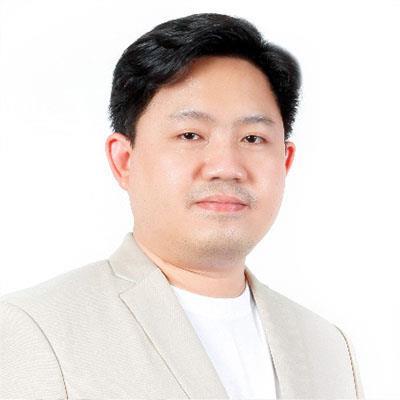
Ekkaphot Trinusonth
Ekkaphot trinusonth director of engineering, tell a friend, privacy overview, amcham membership tiers.
PLATINUM / GOLD / SILVER MEMBERSHIP
Please contact the office for a list of enhanced benefits for higher tiers of AMCHAM membership.
CORPORATE MEMBERSHIP
Corporate Membership is available to companies registered in Thailand. Corporate Members receive a listing in our Member Directory, the right to nominate up to 10 representatives, and 8 vouchers that may be used at our Monthly Luncheons (a value of THB 8,000). Members are entitled to one vote.
Entrance Fee: THB 10,000 Annual Dues: THB 32,000
ASSOCIATE STATUS
Associate Company Status is available for companies without registration in Thailand. Their application should be accompanied by registration where the company is headquartered. Associate Companies receive a listing in our Member Directory and the right to nominate 2 representatives. Associate Companies are not considered AMCHAM members and are not entitled to a vote.
Entrance Fee: THB 10,000 Annual Dues: THB 20,000
INDIVIDUAL STATUS
Individual Status is available for those who are not employed. Individuals are entitled to participate in AMCHAM activities at the membership rate, but may not hold elective office or leadership roles, nor are they allowed to vote. A retiree or student visa is usually requested as an entry qualification for this type of membership.
Entrance Fee: THB 10,000 Annual Dues: THB 10,000

COMMENTS
On-site Factory Visit. Welcomes everyone to visit our 5 factories; Phra Pradaeng Factory, Pathum Thani Factory, Kamphaeng Phet Factory, Nong Khae Factory, and Ayutthaya Factory which are created as Ajinomoto Exhibition Center giving a chance for anyone who would like to visit and learn our production process, quality control system, safety and environment, and company products.
The Cost of the Chiang Mai Factory Tour - With tour prices varying slightly, depending on which company you go with, costs on average 400 baht ($13.25), which for a three and a half hour tour with a guide, I think is an astounding deal. Sure, you'll likely spend money in one or more of the factory shops, but prices are good and most of them ...
The Shinawatra Thai Silk Company has been in business since 1911, making it the oldest silk factory in Thailand, and it all started in Sankampaeng, an area of Chiang Mai known for its arts and crafts. ... This factory tour was important enough to be included in HRH Princess Diana's tour of Thailand in 1988, and a picture of her visit can be ...
Our fully-owned best-in-class production facility is situated in the suburb of Bangkok (Thailand), covering 9,300 square meters with approximately 400 skilled craftsmen in-house (all full-time). We have passed numerous numbers of quality audits and inspections exclusively conducted by reputable companies. Our factory is currently certified by ...
Factory tour shop and cafe. Newly opened what a great experience you get to see the factory and there is a wonderful cafe serving chocolate fondue and chocolate drink made with their quality chocolate. ... While selling great options like Khao Soi, chili, durian or Thai tea, they give you very basic stuff for your creation, like dry bananas ...
Andamanda Water Park in Phuket by Thailand Tours. 23. When the temperature soars, head to Andamanda Phuket to cool off and play in five themed zones, 25 attractions, and 36 lanes of activity. Offering fun for families and thrill seekers alike, Andamanda offers slides, rides, wave pool, lazy river, beaches, swim-up bars, kids zone, attractions ...
Thailand is driven by the Buddhist faith and some 26,000 wats, or temples, dot the landscapes of this southeast Asian nation. Take a private tour of three significant Bangkok temples, including the reclining Buddha at Wat Pho and marvel at the religion that permeates the culture and traditions of this city.
For The Ride. Factory visitor experience. ทัวร์ชมโรงงาน. ทัวร์ชมโรงงาน. จากคอนเซ็ปต์สู่ดีไซน์ ยาวไปจนถึงการผลิตจริงเป็น Triumph รุ่นใหม่ สมาชิกทีมงาน ...
Our tour takes you around the factories of Chiang Mai where you can buy Silk and Cotton, of a high quality at attractive prices. You can also purchase Woodcarvings, Lacquer Ware, Umbrellas and paper, Silver, Jewellery and Celadon (greenware). What to bring? Plenty of Thai Baht. Tours leave daily from Chiang Mai at your own leisure.
เปิดประสบการณ์ใหม่กับการเยี่ยมชมโรงงานอายิโนะโมะโต๊ะแบบ ...
The tour starts next to Siam Pier at 10:30am where you'll greet your guide and hop on board one of the klong boats for an exciting ride down along the canals. $56. per adult. Duration 4h. Find the BEST Factory Tours tickets and tours recommended by travelers in Bangkok on Travelocity.
Recently, Ajinomoto Co., (Thailand) Ltd. introduces its new virtual factory tour online platform which allows visitors nationwide to be able to easily access the Factory Tour program in 360° view ...
The official name for the operating division we were visiting is Sony Technology (Thailand) Co., Ltd., and the factory is located in the Chonburi area of Thailand, approximately 60-90 minutes ...
Pandora's crafting facility in Lamphun near Chiang Mai in Northern Thailand began operations in early 2017. The facility takes its design inspiration from our signature charm bracelet. The circular shared area - known as the Halo - at the centre of the facility resembles the bracelet.
FACTORY TOUR. Let us take you through our major operations: Frozen Seafoods Operations and Canning Operations. At every stage, you will find our production processes conforming to the high standards demanded by international markets. Stringent quality assurance and control systems have ensured we meet our customer requirements as certified by ...
Manufacturing Committee: Jelly Belly Factory Tour- June 2. Organized by: Manufacturing Committee. Event Highlights: A factory visit at the Jelly Belly Candy Company located on the WHA Eastern Seaboard Industrial Estate in Rayong was a great success. The members had an opportunity to see the entire production process from making the candy to ...
Pattaya 3N. Pattaya is a popular tourist destination located on the eastern coast of Thailand, approximately 150 kilometers (93 miles) southeast of Bangkok. It is... Return Airfare (Ex-Ahmedabad) Stay for 3 Nights at Pattaya Hotel (Breakfast) Half Day Coral Island Tour with Indian Lunch - Sea... US$ 391 per person. Includes Taxes & Fees.
Grand Palace & Emerald Buddha Half-Day Tour. By Travstore Travel Management. Embark on a tour to visit the marvelous Grand Palace and explore its grounds which feature one of the most well-known temples in Thailand, Wat Phra Kaew, or. $44. per adult. Duration 5h.
Cherdchai business include interprovincial bus services, bus body builder factory, authorized Volvo bus dealership and real estate development. ... Most services are long-haul routes In the northern and northeastern regions of Thailand. Cherdchai Tour also operates medium-distance services between Bangkok and Nakhon Ratchasima, and some eastern ...
Cannabis Farm Half Day Tour from Bangkok and Pattaya. 4:00 Hours. private. For the First Time in Thailand and in South East Asia, You can Now Visit a Cannabis Farm for a Half Day Tour and Get a Full Knowledge on How to Grow Cannabis with all Steps, Different Types of Seeds, Difference Between Cannabis and Hemp, and Many more. Read more.
KEWPIE (THAILAND) CO.,LTD. 1023 MS SIAM TOWER (23 Fl.) Rama 3 Road, Chong Nonsi, Yannawa, Bangkok 10120 THAILAND Tel: +662 294 5115 Fax: +662 294 5424
Contact Us. +971 4 210 9000. [email protected]. Embark on the ultimate holiday adventure in vibrant Pattaya, Thailand, with our premium package. Experience the perfect blend of sun, sea, and excitement, including a Nong Nooch Tropical Garden Tour. With premium accommodations, seamless flights, transfers, and unforgettable ...
Mattel Bangkok Limited. Other Manufacturing. Bangpoo Industrial Estate Export Zone 683 Soi 9, Moo 4 T. Praeksa A. Muang Samutprakarn 10280. (0) 2324-0373. (0) 2324-0789. Visit Website.